#intelligent analog capabilities
Explore tagged Tumblr posts
Text
There are two types of Mech, the Analog, and the Linked.
Analog mechs are the far, far cheaper of the two. Much less specialized, and infinitely more common, able to be found not just in military use, but in Agricultural and Industrial use as well.
To pilot one, all you need it four limbs (Including prosthetics) and good senses, and to score well in the Simulators to get your license.
Analog is a bit of a misnomer, a holdover word from yesteryear, simply meaning "Less sophisticated."
Analog Mechs work by scanning the Brain Activity of the pilot, comparing it to the physical input of the controls, and deciding what to do from there. They're considered old fashioned and less reliable than Linked Mechs, but they're reliable enough for the work they do. They are more easily replaced and retrofitted for different tasks.
They have simpler AI, and to exit one, you simply take the helmet off and open the hatch.
Linked Mechs are a whole other can of worms.
Each and every Linked Mech is custom built and fitted to their pilot, from the heaviest weapon, to the smallest nut, no one is the same as the other.
Linked Mech are Physically plugged into their pilot's nervous system, and they act as one. It can take hours of Decompression and Disconnection to remove a Linked Pilot.
Linked Mechs are truly nothing without their pilots.
Linked Pilots are the most terrifying people you may ever meet.
Their skin is mottled from the Oxygenator-Coolant that runs in their veins, the plugs and ports too deeply entwined in their flesh and body to be removed without serious disruption to their faculties, hairless and sterile from their conditioning and actions when inside their vessel, and that's only the physical differences.
Depending on how long they've been a Linked Pilot, their mental capabilities are affected in different ways.
'Young' pilots are simply too wary - able to pick up on the most minute details, in all five senses.
Their Mechs are still machine.
'Moderate' pilots have some neurological and mental degradation in addition to what they had before. often confused or forgetful outside of their mech, but still very aware of their surroundings, if not their place in time.
Their Mechs act protective of them, like a dog to it's beloved owner.
'Old' Pilots have all the earlier issues, compounded and worsened, and sometimes confusing themself for their mech, even going so far as to entering refill and Refueling areas of the hangars.
Their Mechs act the same, often trying to reach their pilot's quarters and the Cafeteria.
They may refuse to separate at time, feeling more comfortable together than apart.
and then there are the 'Fused' the oldest and rarest caste of Linked Pilot and Mech.
The Pilot and The Mech fused absolutely, inseparable for Neurological, Psychological, and physical reasons.
They are the same. They are one. A perfect fusion of the Biological and Mechanical, Electrochemical Intelligence and the Fissile-Logic Personality, Mirroring each other with every breath and ventilation protocol.
And they are still people.
The Fused still need social interaction and entertainment. They still need variety and novelty, comfort. All the things anyone else would.
Fused are the least common, but are the least likely to die. Too perfectly combined, Too well accompanied.
The Three times a 'Fused' has been separated, The pilot Died, the Mech 'Bricked' itself, like a Jail-broke phone, no matter how it was done.
Fused are the most loyal, true, and caring of all pilots.
Few ever meet the 'Pilot,' the meat within the metal, but the few that do are those most trusted by the Fused person, as the Fused is showing you their beating heart.
If you earn one's trust, and are given this deep, grand honor, I only have one piece of advice.
Do. Not. Break. That. Trust.
220 notes
·
View notes
Note
Any ideas to connect SU Diamonds and Worm Entities for a crossover?
For the past three years and change, I've been kicking around the idea of the Gempire as the residual result of an entity that botched its own cycle so badly that the central Zion-style figurehead holding the entire operation together is a hundred-thousand-year-gone memory. The result amounts to an entity with serious brain damage; The gems retain elements of the original programming for the cycle- namely, the ability to create anthromorphized avatars reflective of the local culture, and the drive to reproduce and consume planets to perpetuate themselves- but they've completely lost the plot on other important elements, namely the importance of hybridizing with local host species, their historical record, the full extent of their dimensional manipulation capabilities, best practices for resource extraction, and, most crucially, mutation, change and innovation as a desirable outcome.
Rather than an avatar, White Diamond is an intelligence analogous to a Endbringer or Titan who slid into the vacant role as the next-most-powerful autonomous portion of the network, holding the consolidated, stretched-thin remains of the original Network together by her fingernails while also deleteriously superimposing her own residual instinct from her original role onto the entire network- namely, to pacify, homogenize and sterilize host planets if and when a cycle is beginning to get out of control. This hybridized with residual data from previous host species that caused the gempire to organize in a fascimile of imperial structures encountered back when their cycle was still functional; essentially "Playing House" at the societal level, aping the culture of a host species without really remembering why.
The result of this is a "cycle" that's bad at everything it's supposed to do but effective enough that it limps on regardless- supremely energy inefficient, stripping planets bare rather than experimenting, and utterly developmentally stagnant. In the unlikely event that an entity were to cross paths with the Gempire, they'd have an uncanny-valley reaction to it and likely attempt to euthanize it, but compared to most entities the Gempire is tiny- while Shards canonically deploy in the hundreds of millions, the gems tend to reproduce only a few tens of thousands of themselves each time they claim a planet, and they usually only strip mine the handful of "active" worlds that would feature in a normal cycle rather than obliterating all dimensional iterations of it.
Yellow, Blue and eventually Pink are similar constructs to White, brought online to assist her in the project after the "imperial" territorial holdings grew too vast to micromanage. Unfortunately (for the cycle) another one of the things that got lost in translation were the controls meant to keep individual shards from developing autonomy or attachment-to-hosts. When the Gempire hit Earth, Pink Diamond and a significant contingent of the network, after patterning themselves after humans and spending a significant amount of time on the ground, pulled a fragile-one and went native, leading to a localized civil war that ended under unclear circumstances when the other the diamonds glassed the planet from orbit and pulled back their operations to prevent whatever affected the rebels from spreading.
All of this happened about 8000 years before the events of Worm, in a universe about 43 dimensions down the line from anything seen in the Earth Bet Cluster; due to the Gempire having mutated so much as to no longer be immediately recognizable as fellow Entities, and with so few active gems left on the planet in the aftermath of the rebellion, Zion ignored the crystal gems and folded them away into the inaccessible dimensional space, where the events of the show played out much as they did in SU canon. Ironically, Steven is the first ever example of this cycle successfully empowering a host, in the most roundabout way possible.
In my notes, and in keeping with the religious-theme-naming of the canon entities, I usually refer to this whole situation as Nirvana (what else would you call it when they break the cycle?)
114 notes
·
View notes
Text
Imagine you have managed to lure & successfully capture a special, and dangerous animal in a cage. You brought it to your facility for a reason, to use it for something important that it can provide you, or that it’s capable of doing… and to run some tests.
You know this animal has a history of being extremely vicious, and that it’s really intelligent. You knew what you were getting into beforehand… you’ve heard the hundreds of horror stories, about it being capable of causing terrifying harm- and it hates being in a cage. it’s crafty and will attempt to escape, so you need to treat it nicely, with utmost respect. You have to pacify its temper while you run the tests, so you give it something to care for, other test subjects for company, and objects that it likes. enrichment to make it all more bearable to manage.
It works, and the animal has gotten attached to the things you provided for it! you see how much it cares for them every day, and that’s good because now it doesn’t bite back as much at the keepers you send in to monitor. All the tests are going smoothly. Sometimes, there are unfortunate accidents (it was in a particularly bad mood the other day and someone lost a few fingers) but that’s okay, things like this can be excused in the long run. It’s unwise to punish the animal, as it’s scary, and special, and you aren’t sure if doing that will make it become completely uncontrollable or ruin the tests/any of the benefits. Just continue using more enrichment and hope that works! there is nothing more important than having it be calmed in the cage.
Everything goes well for a while… until one day, when what you had given it to care for disappears. you don’t know where they went (or maybe you do) and the animal falls into a deep depression. you observe as it begins exhibiting stress-related self destructive behaviors like biting its own fur off. but those soon switch to threatening behavior. it starts slamming and tearing into the cage, openly attacking with fangs and claws at the employees, causing a ton of problems- it was only a matter of time until this happened. It has nothing to lose anymore, and you now understand the murderous rage that all those stories talked about. In the dead of night, you walk by and can’t see anything in the darkness but you can feel its sharp eyes watching your movements…. plotting.
If it got out it would certainly try to kill you.
One of the employees goes missing one day, on top of the animal being way more unstable and hard to deal with. While you try to solve this new problem, you tell everyone to halt their work and warn them to not make any sudden, startling movements around the animal + not go near the cage at all for the time being, in fear of it lashing out more. They are all following your orders to stay away. But unbeknownst to you, the missing keeper had actually fallen into the cage with the animal, who is now very focused on toying with its new prey...
When you find out about this, there will need to be a choice: face the threat directly, rescue the employee and risk punishing this already unstable animal for its actions in an attempt to get it under control (you have never done this before) or, cut your losses like previous times and just allow it to play with its toy…?
———
fun little analogy & speculation of the federation’s pov related to q!bad, with a sprinkling of special guest theory. the reveal that they’re scared of him & treat him kinda like a dangerous wild animal gave me thoughts :3
#qsmp#qsmp federation#qsmp badboyhalo#text post#im so normal about the federation being afraid of him (it makes me crazy)
177 notes
·
View notes
Text
Top 20 Portrayals of Frankenstein's Monster
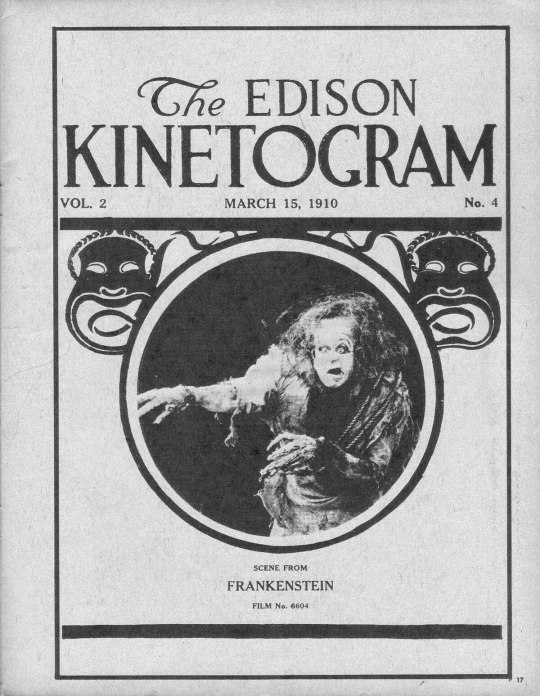
I talk about Bram Stoker’s “Dracula” a lot on this page. There’s a good reason for that: it’s one of my favorite horror novels, as well as one of the most classically renowned. However, there is one other famous horror classic, arguably even more celebrated, that I don’t discuss as often, with a title and characters just as infamous in the world of Gothic literature as the undead Count. I speak, of course, of Mary Shelley’s “Frankenstein, or the Modern Prometheus.”
It’s fairly obvious where I stand on the “Dracula vs. Frankenstein” competition, so I won’t go into that mess. However, while I do prefer Bram Stoker’s novel between the two, I do still have great respect for Shelley’s work. “Frankenstein” is essentially the first example of sci-fi horror ever created. First of all, while Victor Frankenstein’s exact methods of bringing his creation to life are left somewhat ambiguous in the novel (I believe it was Universal’s 1931 movie that first came up with electricity being the device), it is made clear that science, not magic, is the process used. Second of all, the ethical and moral questions of the novel are the kinds we find more commonly in science fiction than supernatural horror (like “Dracula”). I’ll get into those dilemnas in the future, with another list, however; for now, let’s focus on the most iconic figure from this story: Frankenstein’s Monster, also called “The Creature.”
The Monster is a great character who has been reimagined and referenced almost as much as his rival in Gothic literature, the aforementioned Count. There are essentially three things that make the character so approachable and interesting to reinterpret. First, the visual elements: in the book, Shelley states that even though Frankenstein chooses the most “beautiful” items of assembly for his home-made man, the end result is still somewhat grotesque and ghoulish. This gives artists of all sorts ample room to pick and choose elements of both appealing humanity and monstrous morbidity and find their own ways to balance them out. Second, there’s the moral ambiguity of the Creature: in the book, the monster does do terrible things, but they’re essentially all acts of retaliation. Different versions make the monster more or less culpable for his actions, thus changing his alignment on the good-evil scale according to each interpretation. However, perhaps the most noteworthy point of variation is the Monster’s intelligence. In Shelley’s novel, the Monster does start off as a shambling, childlike brute, but this is only at the start, when he’s freshly made. It soon becomes clear that the Monster is not only intelligent, but capable of being articulate, eloquent, and intellectual; arguably even more academic in personality than his creator. However, things changed when the story was adapted in later interpretations: most blame the Universal films, again, for making the Monster more of a naive innocent or dumb animal, but in truth, this was something that predated those films by at least twenty years. It’s understandable why: while seeing the Creature become more of a man is certainly symbolic and fascinating, it is equally interesting - and arguably even more tragic - when the Monster is essentially a big puppy that doesn’t really understand the danger he can pose to others. With so many ways to interpret the character, in so many varied directions, it was EXTREMELY hard to cherry pick my favorite versions, and even harder to organize them into a solid ranking. However, I think I finally achieved an at least acceptable listing of my favorite renditions of this arguably most empathetic of horror icons. Also, QUICK DISCLAIMER: I decided not to include Rocky from “Rocky Horror (Picture) Show” or Sally from “The Nightmare Before Christmas.” While other Frankenstein-Monster-analogous characters WILL appear here, I felt they were a little too much their own thing for me to include them, if that makes sense. So, without further ado (I’ve rambled quite enough), here are My Top 20 Favorite Portrayals of Frankenstein’s Monster!
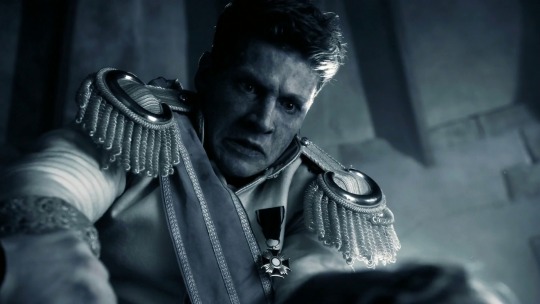
20. Chad Michael Collins, from Once Upon a Time.
Yep. “Once Upon a Time” handled Frankenstein. And yes, it was as bizarre as it sounds, and the series kind of makes it clear that’s the point. How DO you take a Gothic story of science-gone-wrong and reinterpret it in a world of fairy-tales and fantasy, where love is the central theme? Well, they found a way, and I’ve always had mixed feelings about the result. Enter Chad Michael Collins as Gerhardt Frankenstein: the elder brother of Victor Frankenstein. Gerhardt is supportive of Victor’s passion and vision as a scientist (at least until the whole “grave robbing thing” pops up), and often defends him from their pompous father. When Gerhardt ends up accidentally getting killed, Victor decides to put his theories to the test not simply to create life, but to try and bring back his brother. However, when Frankenstein brings his Creation to life, what he gets isn’t the brother he once knew: instead, he gives life to a dumb, aggressive, childlike brute, who ends up murdering their father in a misguided attempt to help his brother. Now, all this is a REALLY cool start to a new version of the story…but unfortunately, that’s also sort of where Gerhardt’s story ends. Victor considers destroying his Creature, but finds he just can’t do it. Vowing to one day find a way to “fix” his brother, Victor thus abandons his creation in his castle to go and seek a “cure”...and that’s it. We sadly never saw Gerhardt again. Victor was a recurring character throughout the show’s run, but his brother/monster never really had any closure. As a result, I don’t think I can give Collins’ Creature any higher placement…but this is such a unique interpretation, and I love the show itself so much, I couldn’t neglect it.
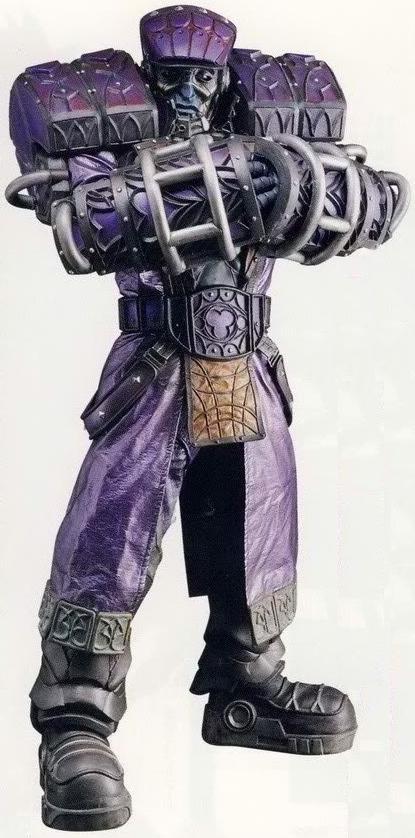
19. Dogga (a.k.a. Riki), from Kamen Rider Kiva.
“Kamen Rider Kiva” is the first Kamen Rider show I ever saw, and it remains one of my top three favorites. (Its chief competitors are “Drive” and “Gaim,” so far.) For those who don’t know, “Kamen Rider” is a Japanese franchise that focuses on the exploits of various motorbike-riding superheroes doing…exactly what you would imagine Japanese superheroes riding motorbikes would do. Facing giant monsters, defeating them with terrible CGI effects and a ton of martial arts, that sort of stuff. (For those of you who are KR fans, I am only generalizing this briefly for the sake of expedience; the franchise is awesome, and I love it as much as you do, trust me.) “Kiva” focuses on the titular hero of the hour - whose real name is Wataru - facing characters themed around classic Universal Monsters. These include Dracula, the Wolfman, the Creature From the Black Lagoon…and, of course, Frankenstein’s Monster. The analogous character to the Monster is Dogga (also called “Riki,” in his human form): the last survivor of a race of electricity-manipulating beings called…what else? Frankens. Dogga is a sort of gentle giant; once a savage creature, he was “tamed” by Wataru’s father, Otoya, and now is one of the great monsters living in Castle Doran, helping Wataru on his journey. While a bit cynical and stoic, he nevertheless does his best to make sure Otoya’s son has all the power he needs to defeat the vampiric Fangires threatening humanity. The character’s human form was played by Eiji Takigawa, who also provided the voicework for his true form. (The Monster costume was worn by famous Japanese stunt artist, Eitoku.)
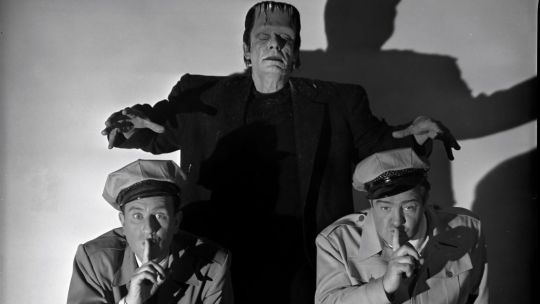
18. Glenn Strange, from Abbott & Costello Meet Frankenstein.
Boris Karloff was not the only actor to play the Frankenstein Monster for the classic “Universal Monsters” film universe. His followers included Bela Lugosi (who had actually been originally slated to play the character back in 1931), Lon Chaney Jr. (who handled pretty much all of the great monsters at some point or another, with varying degrees of success), and this fellow, the more unknown Glenn Strange. Of the three, I would argue that Strange was the most successful. At the very least, he had the longest lifespan: he first played the Monster in the “monster mash” movie “House of Frankenstein,” then reprised the role (albeit for little more than a cameo appearance) in the sequel, “House of Dracula.” While Strange certainly carried off the costume and makeup well, however, neither movie really gave him a chance to stretch his legs in the part properly. Thankfully, the actor got a better shot in the vaudevillian riff “Abbott & Costello Meet Frankenstein,” in which the famous comedy duo - playing the role of a pair of bumbling baggage handlers - had to cross swords with multiple monsters at once. In the film, the Monster is once again an innocent, dumb child, tricked into serving Count Dracula. The vampire lord, however, fears the Monster’s power, and decides to transplant the brain of one of the comedy pair with the Creature’s, in the hopes this will make the Monster more obedient. Strange would play the monster a couple more times later on, but his was by far his best outing in the role.
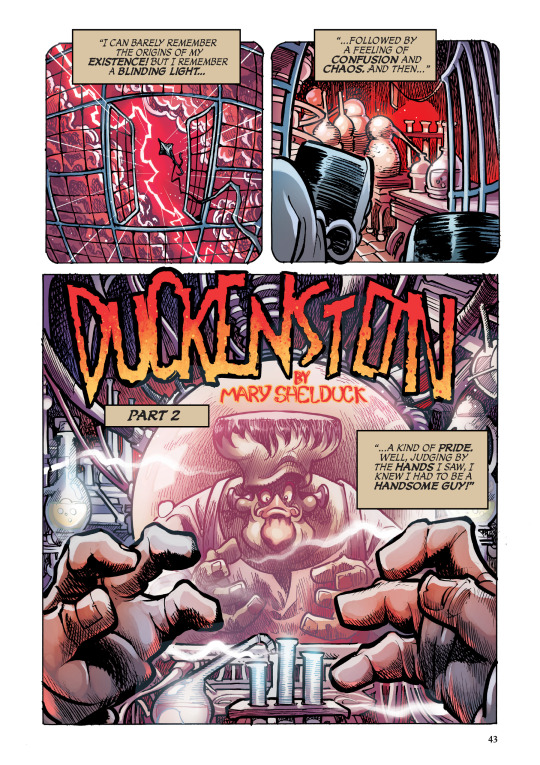
17. The Version from “Disney’s Frankenstein, Starring Donald Duck.”
A.K.A. "Duckenstein." In the past, I’ve mentioned that Disney made their own graphic novel adaptation of “Dracula” - starring Mickey Mouse as Jonathan Harker - which I admired not only for its daring and general oddness, but also because it was clear the people who made the comic also were really big fans of the original novel, sticking true to the source and providing a lot of in-jokes that only readers of the book would really get. Well, at the same time Disney made their Dracula comic, they also made one of “Frankenstein,” featuring characters from the Donald Duck universe. (The Monster in the story, however, appears to be an original character.) As well as making various in-jokes to the novel, the comic also serves as a sort of twisted homage to Disney’s primary medium: animation. Donald Duck as the mad doctor starts off not interested in science, but in art, and and wishes to find a way to bring inanimate art to animated life. This inspires him to create a monster not out of used (body) parts, but out of painted cardboard. The Creature in this comic is a lot of fun, and - because this is a Disney story - the comic actually ends by giving the Monster a happy ending, though one that still has a slightly bittersweet side to it, all without ever ruining the ideas present in Shelley’s novel. While I personally liked Disney’s Dracula more, this was still a fun reimagining, and the nods to animation itself definitely helped give it more credit.
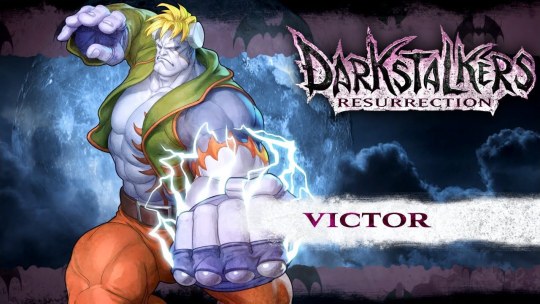
16. Victor Von Gerdenheim, from Darkstalkers.
Yet another Monster-analogous character, and arguably the most tragic of such examples. In the universe of Darkstalkers, Victor is the creation and “son” of Professor Von Gerdenheim. Unlike in the novel or the Universal movie (the latter of which is the main source of Victor’s inspiration), Von Gerdenheim does not betray or abandon his creation purposefully. Instead, due to a small miscalculation, the Professor was tragically killed by the same lightning storm that gave his creation life. Victor - “born” with no real concept of life or death - mistakenly believed his father’s unresponsive state was due to him ignoring him, and vowed to grow stronger and more powerful in the hopes he could get his father to care. In later games, Victor finds out he has a sister: Emily, a sort of “prototype” Von Gerdenheim created. Unlike Victor, she is a beautiful young lady, and the two care for each other very much…so, when Victor’s sister malfunctions and she suddenly shuts down (not exactly “dying” so much as falling into an almost fairy-tale like sleeping state), her brother changes tactics from seeking his deceased father’s approval to trying to save his sister’s life…an attempt that, by all accounts, could be just as fruitless. Truly, a hopeless creature whose story is one of the most disturbing and sorrowful of any Darkstalkers character…and yet he literally uses his fat butt to clench his enemies to death as one of his special moves in combat. No, that is not a joke. This is why video games were made, folks, clearly.
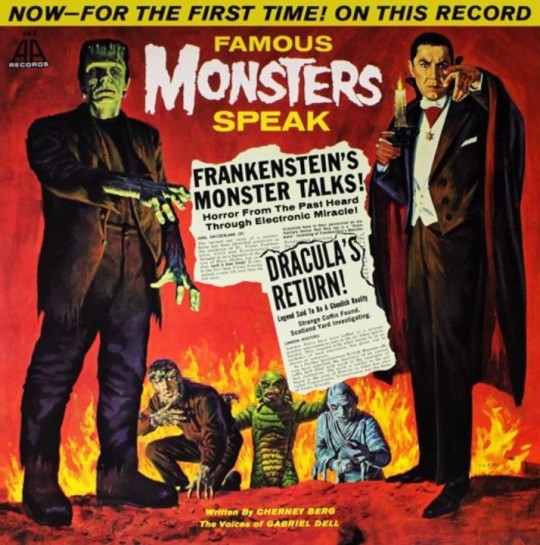
15. Gabriel Dell, from “Famous Monsters Speak!”
Here’s an obscure one that a lot of you probably don’t know about. “Famous Monsters Speak!” was a two-part audio production, ostensibly aimed at children, in which performer Gabriel Dell - a noted impressionist - played both the Frankenstein Monster and Count Dracula. Originally released on record, the first part of the production is Frankenstein themed. The premise is that a team of researchers have discovered a mysterious bunch of recording cylinders, on which it’s revealed the thoughts of the Frankenstein Monster - starting from the moment of his birth - have somehow been put down. We thus hear the voice of the Monster, getting the Creature’s perspective on things as he wanders through the world, seeking vengeance against his creator. In a change of pace, this version of the Monster is actually depicted as an inherently evil being: it’s indicated that, having been made from the bodies of seven dead criminals, their evil nature has infected the Monster from birth. Later in the story, the Monster DOES start to develop more humanity, as he falls in love with a beautiful woman - despite her fear of him - but when he accidentally kills her, and the Doctor refuses to save her life, the Monster returns to his dastardly ways. While this is far, FAR from the pathos-infused, tragic being so many other versions - including the novel - depict, I will give it this: this version still scares the bejeezus out of me. I heard it as a kid, and let me tell you, it’s AMAZING something this genuinely scary was marketed to children. It may not be the most sympathetic or accurate version, but it’s arguably the most frightening I’ve ever encountered. On a side note, Dell’s Dracula half of the production is also pretty good; I very nearly included him in the Honorable Mentions the last time I did a “Re-Count” of the character, but…well, frankly, I had to stop somewhere. :P
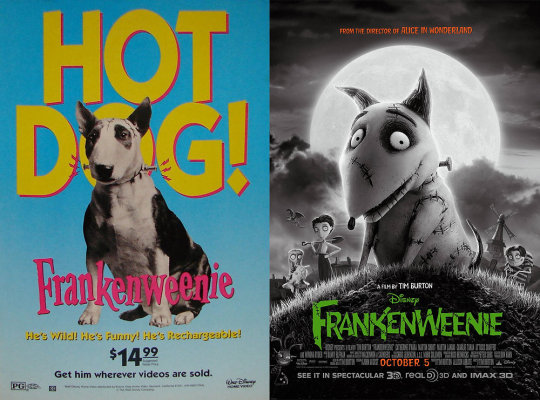
14. Sparky, from Frankenweenie.
If there’s one surefire way to make the Frankenstein Monster sympathetic, it’s to make him into an adorable little puppy dog. Tim Burton attempted this very early in his career with the 1984 live-action short subject, “Frankenweenie.” In 2012, following contract negotiations with his old employers at Disney, Burton released a feature-length remake of his old short project, this time produced via stop-motion animation, with a style similar to “Corpse Bride.” In both versions, the “Monster” starts life as a bull terrier named Sparky, owned by a young boy named Victor Frankenstein. When Sparky is tragically killed, Victor decides to bring his pet back to life. What’s great about both versions of this story is that, after being repaired and reanimated…Sparky is still Sparky. He’s still the loving, playful, frankly cute-as-a-button pup that Victor always loved, he just…looks a little different now. More than any other version, this one really isn’t a monster at all, which makes the tragedy and horror caused by the misunderstandings of others all the more sorrowful. Seriously, how could anybody be scared of a sweetheart like this? Proof that the love between a boy and his dog can transcend life itself, Sparky is the most precious Frankenstein Monster you could ever give treats and belly rubs to.

13. Fran, from the Fate Series.
For those unaware, the “Fate” series is a Japanese-created franchise in which various Mages, or “Masters,” summon Heroic Spirits, or “Servants,” in a recurring quest to capture the Holy Grail. These Spirits/Servants take the forms of various famous figures from history, literature, and mythology. (There’s a LOT of convoluted lore beyond that, but that’s the basics of things.) A common running gag (if you want to call it that) throughout the series is the interpretation of traditionally male characters as female ones: sometimes the explanation is that history mucked things up, sometimes it’s because they masqueraded as men in their lifetime, and sometimes it’s something much, MUCH more complicated. Examples of this trend include King Arthur (and Mordred), Leonardo DaVinci, Sir Francis Drake, Emperor Nero…and, of course, the Frankenstein Monster - also referred to as simply “Frankenstein.” She, however, prefers the name “Fran.” This version of the character essentially mingles elements of past versions together: her backstory is fairly close to the Shelley novel, but the way she’s depicted in terms of personality is typically more akin to that of the Universal creature: a childlike innocent with limited speech ability and an almost puppy-like demeanor. (This is specifically in her common Berserker form…it’s complicated. XD ) I really love this version of the character, and the explanation for why Fran is female to begin with actually makes a lot of sense, although it still doesn’t quite explain why the story we know today ended up the way it did. Still, the Fate series is nothing if not thoroughly insane. In Japan, Fran is voiced by Ai Nonaka; in English language releases, she’s voiced by Sarah Anne Williams.
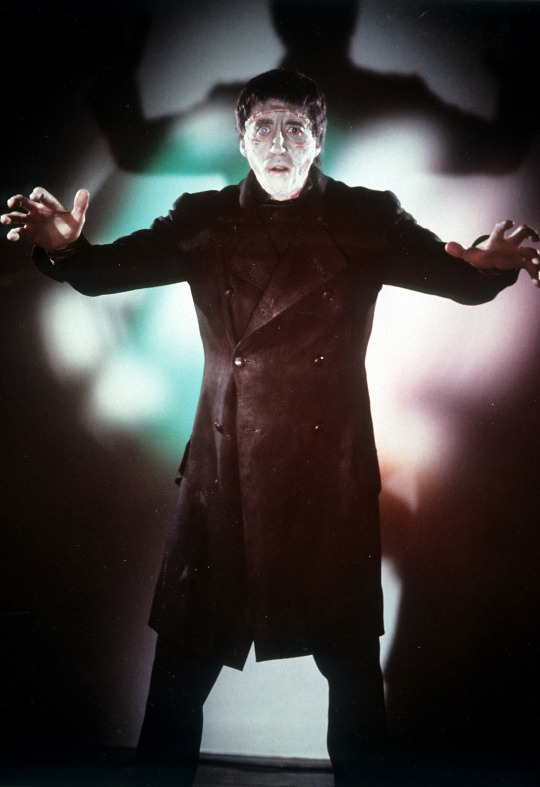
12. Christopher Lee, from The Curse of Frankenstein.
Before he played Dracula (or the Mummy), Christopher Lee’s first great monster role was also his big break in movies. Lee had performed in several things before he was cast as the Creature in Hammer’s loose adaptation of “Frankenstein” - entitled, most likely for the sake of unique variation, “The Curse of Frankenstein” - but it was his performance in this feature that really put him on the map. With a visual design apparently inspired by Cesare from “The Cabinet of Dr. Caligari,” Lee played an even more grotesque and dangerous version of the Monster than perhaps any seen on the screen before. In the film, the Creature isn’t quite the childlike innocent of the Universal films, nor is he a mindless killing machine: it’s indicated that (much like in the Universal film) the brain that was put into this monster was damaged, and as a result, the Creature has come out wrong. The Creature has an extremely violent temper, and seems ready to kill at the slightest provocation, but there’s a touch of pathos as you get the sensation the reason the monster lashes out so violently is because it doesn’t really know how else to process things. Later Hammer films would show Frankenstein creating new Monsters, some more grotesque and nasty, others more sympathetic and even pleasing to the eye…but, since this was the first film of the Hammer Frankenstein series, and the only one more or less based on the novel proper, I felt Lee’s was the version of the Monster most worth crediting. He set the trend for a whole new wave of man-made men, and it was the success of this movie, and it’s Monster, that first put both Lee and Hammer in the annals of horror fame.
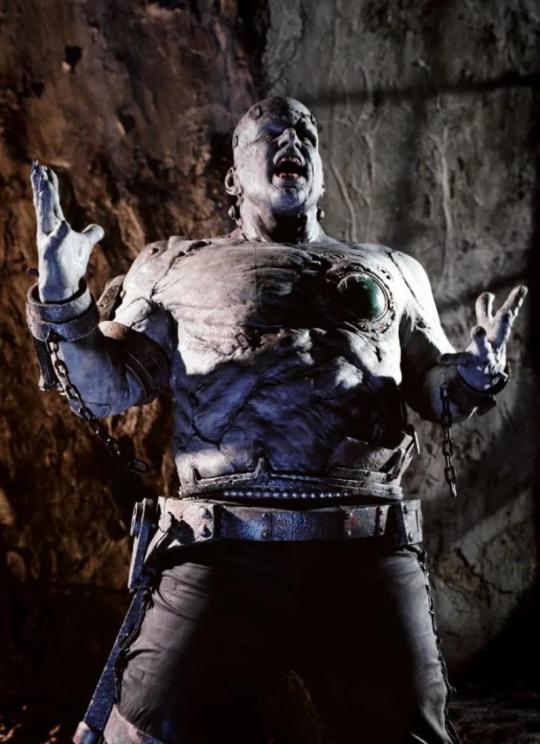
11. Shuler Hensley, from Van Helsing.
Stephen Sommers’ 2004 schlockbuster, “Van Helsing,” was a tribute to classic “Monster Mash” movies of the past, like the aforementioned “House of Frankenstein.” It starred Hugh Jackman as the titular monster hunter, and was intended to start a whole new reboot for the Universal Monster lineup. Ultimately, however, it ended up failing both critically and at the box office. (2017’s Mummy looks on in sympathy.) While the movie is admittedly very, VERY flawed (and absurdly over-the-top), I actually enjoyed it a lot growing up, and I still have a soft spot for it. It’s a guilty pleasure, if nothing else. One of my favorite aspects of the film is Shuler Hensley as the Frankenstein Monster. (Incidentally, Hensley had performed onstage with Hugh Jackman in the past, most notably as the sinister Jud Fry in “Oklahoma.”) While the design of the Creature - referred to as both “the Frankenstein Monster” and simply “Frankenstein” throughout the picture - owes much to the classic Universal movies, the actual portrayal is slightly closer to the original novel, as the Monster is a well-read, eloquent creature, despite his immense strength and bad temper. In the film, Dracula actually funds Dr. Frankenstein’s experiments, leading to the creation of his “son;” it’s revealed that the Count plans to use the Monster as a sort of “battery,” allowing him to give life to his undead vampire children. With them and the Monster, Dracula can then - of course - take over the world. It’s thus up to Van Helsing and his allies to try and keep the Monster out of Dracula’s grasp. Most people probably wouldn’t rate this version so highly, but again, I just have a soft spot for this film, as well as this Creature design.
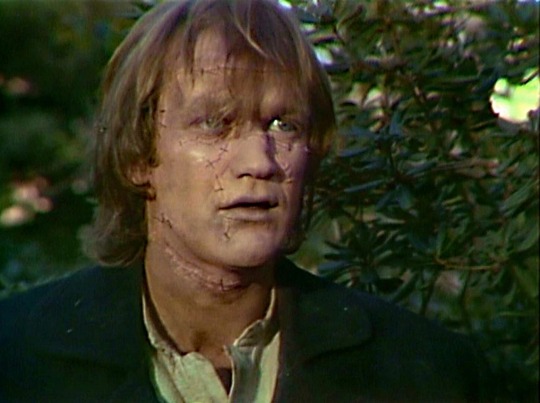
10. Bo Svenson, from Dan Curtis’ Frankenstein.
Dan Curtis was the creative mastermind behind the famous soap opera, “Dark Shadows”...which I’ve never really seen. (I did see the Tim Burton film based on it, for the record, but a.) I don’t think it’s very good, and b.) to my understanding, it follows the show about as well as Universal’s Frankenstein follows the book.) Needless to say, the man was a major fan of Gothic literature and old-school horror stories, and during his time he put his spin on several of them. One of them was an early 1970s TV miniseries adaptation of “Frankenstein”: at the time, it was - I think - the most accurate interpretation of the story put to screen. (Later versions followed the story even more closely.) Svenson’s Creature, appropriately, is a bit closer to the book; not a dumb animal, but instead a tortured soul who is capable of understanding the world and intellectualizing all he takes in, but cannot symbiotically exist with other human beings. The ending is where things really take a different turn from the novel, but I won’t spoil it here. This version can be hard to track down nowadays in good copy, at least from what I’ve found, but if you’re able to do so, definitely give it a watch.
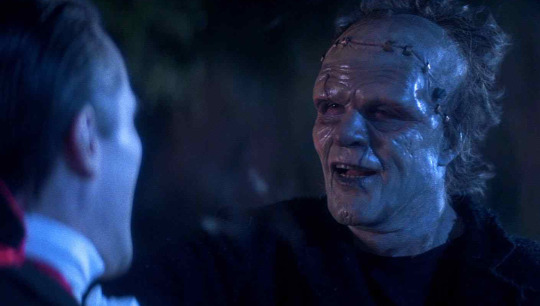
9. Tom Noonan, from Monster Squad.
A common trope I’ve seen with the Frankenstein Monster is what might be termed “the friendly monster.” Basically, the Monster starts off as an antagonistic presence, but then befriends the main heroes of the day and becomes a hero by the end of the story, usually with much adorableness and silliness abounding over the course of this development. While I can’t be sure of where this idea really started, I think my favorite example of this, and one of the first I’m aware of, was in the 1987 film “Monster Squad.” This was yet another Monster Mash movie, accurately described as a combination of “The Goonies” and “Ghostbusters,” focusing on a bunch of child heroes having to save their town from Dracula and his monster minions. Once again, the Frankenstein Monster is depicted early on as a pawn of Dracula’s, and seems to be the fellow Monster the Count is most close to…which makes things all the more interesting when, instead of killing the heroes for the vampire king, he ends up befriending them, and eventually helps them defeat the Count at the climax of the picture. Tom Noonan had played the much-less-savory role of Francis Dolarhyde in the horror/crime film “Manhunter” the year before; he was offered the role of the Monster as a result of his performance. I find this sort of ironic, since the two characters really couldn’t be any more different. Noonan evidently had a couple of projects to choose from, and went with Monster Squad because he wanted to play something lighter and more sympathetic, to contrast the darkness of Dolarhyde. He delivers excellently: of all the Karloffian Monsters on this countdown, few have quite as successfully followed in the original’s footsteps with the same level of sweetness and sensitivity. Plus, seeing the Monster boom “Bogus!” right into Dracula’s face before IMPALING him, is…something I’m SO glad exists in the same universe I live in.
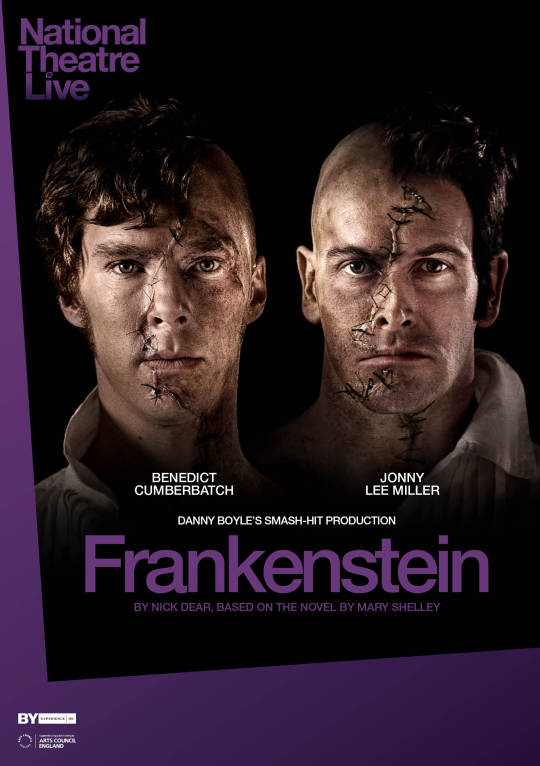
8. Benedict Cumberbatch & Jonny Lee Miller, from the National Theatre Production.
Ever wanted to see two Sherlocks for the price of one? In something that is not even Sherlock-related? Well, first of all, you’re a very weird person. (So am I, this is a good thing.) Second of all, then perhaps you’ll enjoy the 2011 production of Frankenstein, adapted by Nick Dear and directed by Danny Boyle. Produced at England’s National Theatre, two performances of this show were filmed…which is good, because the big gimmick of the play was the double-casting of its two lead actors. Benedict Cumberbatch and Jonny Lee Miller both played the Monster and Dr. Frankenstein…but not at the same time. The actors would alternate performances, with Cumberbatch playing the Creature and Miller playing Frankenstein one night, then the two swapping roles the next, and so on and so forth. The story in this version is told mostly from the Monster’s point of view, as the play starts right off the bat with the birth of the Creature, and - like in the book - leaves it ambiguous how it was brought to life. There’s a lot of things to admire in this play, frankly, but I think it’s the gimmick of the two actors, and who those actors are, that gives it the most draw to see it. Both Cumberbatch and Miller handle their twin roles slightly differently, but there’s still some obvious similarities, for obvious reasons. If I had to choose which of them I like most as the Creature, I’d probably say I like Cumberbatch in the role more. His voice is a bit clearer, and he puts a LOT more movement into his body motions and actions, compared to Miller’s work. Both, however, do an amazing job in each role. Definitely look this production up and watch both versions, if you can.

7. Robert DeNiro, from Mary Shelley’s Frankenstein (1994).
Released in answer to Francis Ford Coppola’s “Bram Stoker’s Dracula” two years before, this film tried to achieve the same success using similar methods; following the book more closely than any film before that, while also still making some significant changes, and also going much more wild with the gore and sensuality than any version prior. While the resulting film wasn’t bad, most people agree that it isn’t and wasn’t QUITE as successful as the Coppola feature…but this doesn’t mean it’s without merits. DeNiro’s Monster is definitely one of those merits: DeNiro is really very surprising in the role. I would never have pegged him to be a perfect piece of casting for ANY version of the Monster, but he really does pull it off, and at times it’s hard to remember who it is behind the scarfaced makeup. The way he handles his body, his voice, his expressions, and everything else for the role really is magnificent. I honestly feel bad for not placing him higher in the ranks. While not a great success in its time, the film does seem to have grown a cult following over the years, and I think it’s mostly well-deserved: this is probably one of my favorite DeNiro performances, alongside “The Godfather Part II” and “Taxi Driver.” If nothing else, his work here has earned more praise and attention than it likely gets.
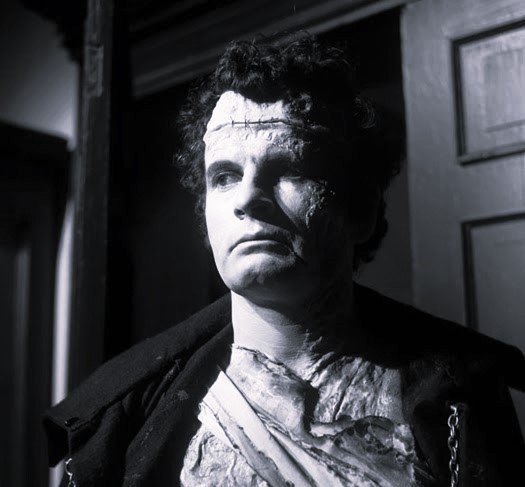
6. Ian Holm, from “Mystery & Imagination: Frankenstein.”
Earlier, we spoke of a production where the actors for Victor Frankenstein and his Monster were played by the same two alternating actors. All very well and good…but what about a production where both are played by the same single actor? This was the case with “Mystery & Imagination,” a 1960s UK television program that adapted many famous, dark stories. I sadly have not been able to find and view most of these, but my favorite of those I HAVE seen was their adaptation of Frankenstein, mostly because of the gimmick of having both the Monster and the scientist played by the same performer. Editing and camera trickery allowed the production to work beautifully, in an age and on a budget where most common special effects that would allow such a thing easily now were not readily available. While Ian Holm is largely best known today for his work as Bilbo Baggins in the Peter Jackson “Lord of the Rings” films, he was a performer with a long and varied career. Even knowing this, I never expected to see him play the Frankenstein Monster, and he does a brilliant job, bringing a sort of nervous softness and steely fury to the role in equal measure. I actually am highly tempted to place him higher, but there’s only room for so many in the top five.
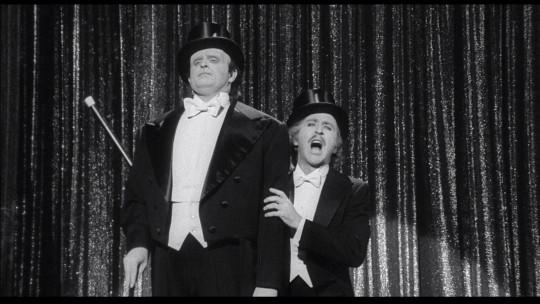
5. Peter Boyle, from Young Frankenstein.
Alongside the sitcom “Everybody Loves Raymond,” I’m fairly certain this movie was my introduction to Peter Boyle. And for as great an actor as Boyle might have been, I sometimes feel like his actual performance as the Monster in this satirical classic often gets overlooked. I tend to find more people talk about Gene Wilder’s work in the title role. And while, yes, Wilder’s Frankenstein - actually a descendant of the original, but I’m still counting things here - is truly fantastic, Boyle’s work as the Karloff-inspired Creature is just as great. What I love about Boyle’s work is, in fact, what I love about Karloff’s most of the time, but now with a totally different sense of mood and style: both are able to do so much with so little, as their eyes, facial expressions, and body movements are largely where the delivery of their performance shines through. But while Karloff plays things for sincerity and danger in the original…Boyle’s Monster is just flipping HILARIOUS. Honestly, that sums up what makes “Young Frankenstein” so great, in general: it keeps the general themes and ideas of both the novel and especially the Universal pictures, but twists them from tragedy and horror to farce and wit. Great movie, great monster, an all around great choice for my top five.

4. Herman Munster, from The Munsters.
“The Munsters” was a 1960s sitcom, supposedly inspired by the success of “The Addams Family,” which focused on the darkly humorous shenanigans in a household made up of characters inspired by the Universal Monsters. The main protagonist of the series was the family patriarch: the Frankenstein Monster himself, Herman Munster, played by Fred Gwynne. In the early days of the show, Herman was a fairly normal “sitcom father” type, but as the show went on, Gwynne and the creators developed the character more. Herman became a loving father, a doting husband, a hard worker who always tried to do his best…and also a complete, bumbling clod. Essentially, the idea of the overgrown child inherent in the Universal films was given a voice and a more contemporary spin, as Herman was often more kid-like than his own son in his attitudes and antics. Herman always meant well, but his dimwitted nature and overblown clumsiness constantly got not only himself, but most of the family, into trouble. Still, he’d always try hard to pull things back from the brink of disaster, and owned up to his mistakes and tried to learn from them in the end. Frankly, he was arguably the most loveable character in the series. (Interestingly, Gwynne also got to play a more “traditional” version of the character in the episode “A Visit From Johann,” where it’s revealed Herman’s creator made a twin brother for him, who lacked even Herman’s meager levels of intelligence.) Unlike the Addams Family - who have successfully been reimagined more than once - it seems like every attempt to bring the Munsters back to life has been a dismal failure. I think this is largely because of the fact so much of what made this particular series work came from the actors: Fred Gwynne’s Herman has been imitated multiple times, but there was a lightning-in-a-bottle quality to his work and to the series that has never been duplicated. The role dogged Gwynne to the end of his days: perhaps most notably, in a production of the play “Arsenic and Old Lace,” where he played the role Boris Karloff had originated. This was by no means a coincidence, especially not when one of the most famous lines in the show has the character claiming, “They said I looked like Boris Karloff!”
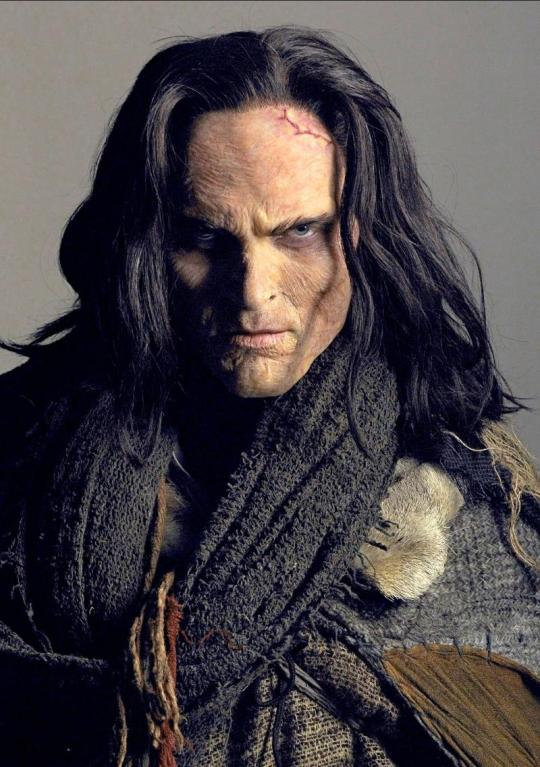
3. Luke Goss, from Frankenstein (2004 Miniseries).
This is quite possibly the single most Shelley-accurate adaptation of the story put to the screen so far. At a hardy length of three hours, split into a two-part television miniseries, it was able to not only take everything from the original novel, but also expand on a couple of things in interesting ways. Appropriately, Luke Goss is probably among the most screen-accurate interpretations of the Creature we’ve ever gotten. This version was made for the Hallmark Channel. Interestingly, throughout the late nineties and early 2000s, in particular, Hallmark made a bunch of film and miniseries adaptations of popular works of fiction; virtually all of them became noteworthy largely because of their faithfulness to the source material. However, most people agree that a lot of these interpretations were a bit stiff. While this miniseries has gotten some similar criticism, I actually think it does an extremely worthy job with the work; most of the weaknesses it has I would offer are really due to the weaknesses of the material. Goss as the creature turns in a delightfully sensitive, tender performance, while still able to deliver on the darker, more dangerous parts of the story, where the Monster’s bitter and cruel side has to come out. This version of the story and the character often gets overlooked in favor of more popular renditions, but it’s one I highly recommend checking out.
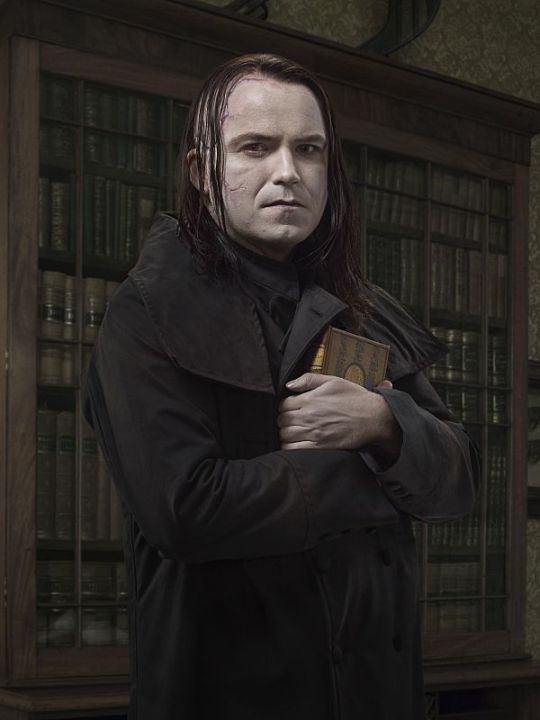
2. Rory Kinnear, from Penny Dreadful.
Of all the more or less Shelley-faithful versions of the character on this countdown, Rory Kinnear’s is by far my favorite. “Penny Dreadful” was a series that combined elements and characters from various pieces of Gothic literature, with multiple sub-plots sort of crashing together throughout the course of the show. Kinnear’s Creature was usually a fairly peripheral figure, his story largely separate from the main plot of the program; however, this meant that the moments where his story and those of the other main characters DID collide became more special by default, and his own side story was arguably the most emotionally intense part of the entire show to begin with. The Creature goes by two “proper” names during the show: in season one, he was referred to as “Caliban,” taking his name from the Shakespearean character. Later seasons had him take on the name “John Clare,” after the famous poet. (I personally preferred Caliban, for various reasons.) Kinnear’s portrayal of the Creature is hauntingly touching and tragic, as he constantly seeks some form of family and acceptance, and it always gets robbed from him, slipping through his fingers. The Frankenstein characters were my favorites from the series, and Caliban/Clare’s tragic tale gave much of the heart to this dark and fright-filled melodrama. Keeping true to the source of the character, only really changing the story he was in, Kinnear’s Creature was ironically perhaps closer to the novel than almost any other.
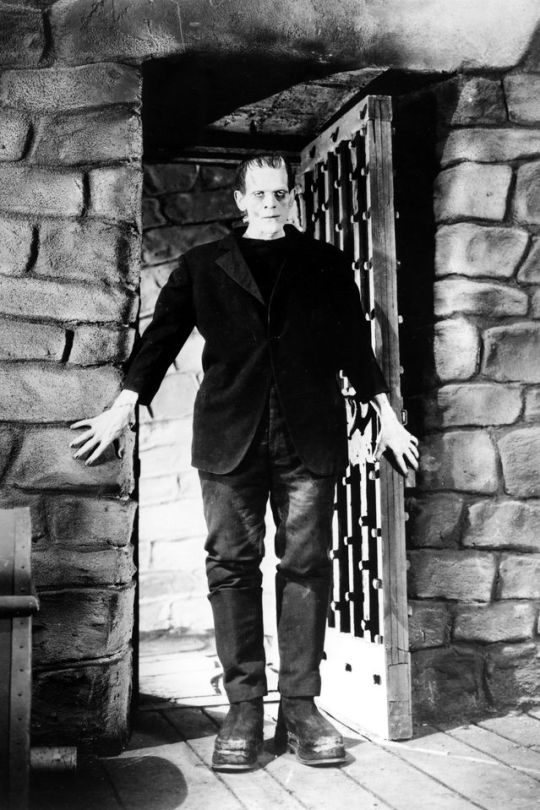
1. Boris Karloff, from the Universal Monsters Franchise.
From two of the most accurate-to-the-book versions of the Creature, to the one who made inaccuracy to the source VERY popular. I know a lot of fans of the original book are going to be swarming me like an angry mob for this choice, but I’m sorry: as much as I love the work in the original novel, Boris Karloff’s star-making portrayal of the Monster is still beloved and popular for a darn good reason. If the Universal film did one thing right, it was take the tragic and sympathetic qualities of the Creature in the book, and bring them to their absolute xenith: Karloff’s Monster is not even remotely villainous, when you really look at things. While he does do some terrible things, it’s always either in justified retaliation, or because he’s being manipulated by a more terrible power, or even because he genuinely doesn’t realize what he’s doing is wrong. In the first film, the Creature is done with almost pure pantomime, and Karloff brings so much gentle life to this shambling, undead puppet, who just wants to be loved and understand the world around him, only to find misfortune at every turn. In “Bride of Frankenstein,” the Monster starts to go through more of the beats of the original book - learning to speak (albeit nowhere near as eloquently as in the novel), seeking a mate, and so on - but remains just as sorrowful a figure. While the third film, “Son of Frankenstein” - Karloff’s final turn as the Monster - sidelined the character in favor of focusing on the conflict between the title character and the malevolent Ygor, Karloff still gets several great moments of pathos, despite regressing once more to a mute beast. While the Creature has become an icon of horror, he is perhaps the most unlikely of such candidates, as you really do feel sorry for him more than you feel scared of him: he really is like an enormous pet animal, you just want to take care of him and help him, and you wish others would see he really isn’t so bad and would do the same. While only barely resembling the figure conjured up in the book, Karloff’s original monster remains iconic not only because of the eye-catching makeup and costume, nor even simply because the films are so long-lasting, but because his performance and the direction of the story made us truly feel for the monster, both literally and figuratively. He has more than earned my personal seal of approval and my number one pick. Case dismissed.
HONORABLE MENTIONS INCLUDE…
Grant Moninger, from TMNT (2012).
This one very nearly made the cut. This version of the Monster appears in a four-part story arc where the Teenage Mutant Ninja Turtles face the Universal Monsters. Moninger voices not only the Monster, but also Dr. Frankenstein. (He also provides the voice of the Mummy, but that’s another story.) Very fun stuff, but I just don’t have a lot to say about this one.
David Warner, from Frankenstein (1984).
This rather obscure TV movie outing has a great cast (alongside Warner as the monster, you also have such names as Carrie Fisher, Sir John Gielgud, and Robert Powell), but is sadly brought down by it’s shoestring budget and heavy truncation of the story. Warner’s performance is great, but the script and his, in my opinion, visually lacking makeup job keep him from making the cut.
Charles Stanton Ogle, from Frankenstein (1910).
The first screen version of Frankenstein ever known. A very interesting piece of history, and the look of the creature is kind of cool, but I feel the story misses the point of the story in some ways (the creature is depicted as more of a supernatural construct than a scientific one), and the film is only about 15 minutes long.
Kamran Nikhad (as Adam the Firstborn), from V Rising.
A somewhat more evil pastiche of the Monster, Adam is one of the toughest and most iconic bosses in this game, alongside Dracula himself. Interestingly, Nikhad voices both Adam AND the Count in this version. Lucky guy.
#list#countdown#best#favorites#frankenstein#frankenstein's monster#mary shelley#universal monsters#halloween#horror#top 20#actors#acting#video games#movies#film#tv#animation#comics#anime
10 notes
·
View notes
Text

The Gloskun
The gloskun (singular and plural) is an amphibious octopoid about the size of a chicken, found in tide pool habitats. They fill similar ecological niches to seagulls and large semiterrestrial crabs; their intelligence and robust digestive systems makes them extremely adaptable generalists. Often referred to as a "quadrupedal mollusc", the gloskun has a full complement of eight arms, but the rear four are adapted into strong, short legs - rather than tapering like an octopus' arms, a gloskun's legs are wide at the base, with the final two suckers adapted into broad, protective, nonsensory "hooves". When moving about, gloskun hold their fore arms together in a "trunk" shape, moving apart to manipulate objects; gloskun are frequently observed with only three arms in the trunk and the fourth holding wet sea grass over their beak to preserve moisture and extend their periods on land, to the degree that cartoon images of gloskun often have green "mustaches" as part of their body. Gloskun defend themselves with ink in water and on land, where they contract their siphons to carefully aim it at the eyes, noses, or mouths of would-be predators. Gloskun move with a characteristic "stamping" gait on land and when hunting on the seafloor; they typically spend water periods resting, but their relaxed legs double as powerful, rippling paddles for fast movement underwater. Gloskun are frequently observed splashing in puddles; biologists previously explained this as a tactic designed to splash prey out of tidepools, but recent study of gloskun behavior has corroborated folk reports that gloskun extract prey from tidepools with their dexterous forearms, and that puddle splashing is a play behavior. Their playfulness, responsive intelligence, and large eyes (often observed as upturned and "pleading", although it's far more likely that gloskun are simply observing their taller observers) make them endearing to humans; this is offset by their dexterity, ink jets, problem-solving intelligence, and long association with humans, which also cast them firmly in the role of "pest" -- similar to opossums, raccoons, foxes, and monkeys in both public perception and folkloric roles. Seaside communities' DO NOT FEED THE GLOSKUN signs are matched only by gloskun skill in getting humans to feed them; gloskun are capable of using tools, and an arms race exists between gloskun and gloskun-proof-trash-receptacle manufacturers. Pet gloskun are analogous to pet parrots, both in that they are frequently found perching on fictional pirates' shoulders and that they require too much stimulation to be ethically kept as pets (gloskun are not as social as parrots, but have much better ability to manipulate objects and equal or greater intellectual stimulation needs). Some communities and individuals do have more equitable working relationships with gloskun, picking up litter in exchange for food rewards or assisting with shellfish harvests.
Joking around with a friend this morning and accidentally invented the perfect seaside pest, which we now release into the Creative Commons to menace your shores.
The gloskun species © 2024 by Nausicaä Enriquez and @transtanium is licensed under Attribution 4.0 International.
39 notes
·
View notes
Note
Speaking of the Fantastic Four, should Sue Storm be a scientist? Both movie versions have her doing more-or-less the same research as Reed. But as I understand it, that's not the origin of the character, and "promoting" her didn't actually help her character in either movie. Couldn't she be a perfectly intelligent and capable woman who just doesn't have a science background?
That's a good question.
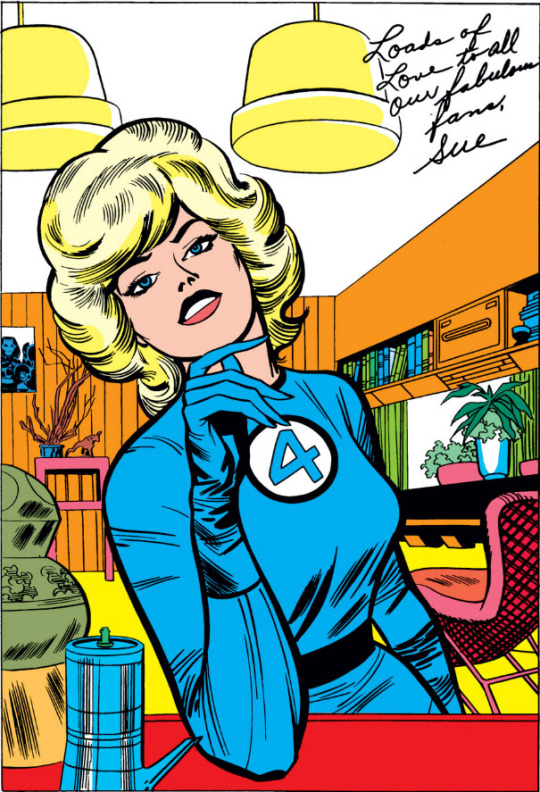
I think it would be genuinely a little difficult to go with the original character arc where Sue Storm is a fashionista, pinup model, and actress turned housewife - Marilyn Monroe and Jackie, to borrow the Mad Men analogy. Yes, she could still be an intelligent and capable woman as a model/actress/housewife, but it would be very noticeable that the one woman in the group is being restricted to those social roles for women deemed acceptable circa 1961 - unless they specifically go with Sue's character arc being about women's liberation.
Rather, I think the updated version of her background (which also has been in the comics for a long time) in which Sue is also a scientist, but from a contrasting field to Reed's (generally a life science or social science as opposed to Reed's focus on physics and engineering) works better. Not only does it give her something to do as part of a team of explorers - playing something of McCoy/Uhura role to Reed's Spock/Kirk mix - but it would also explain why she would have been involved in the launch project in the first place.
I also think you can combine the two: there's no reason why Sue Storm couldn't have worked as a model and actress to support herself in college, and I think there's a lot you can do in a kind of Hidden Figures-meets-For All Mankind way to show Sue as a scientist who was trying to become one of the first women astronauts, but who had to do an end-run around NASA's New Frontier-era male chauvinism in order to achieve her dreams.
47 notes
·
View notes
Text
Thoughts on Sphene
This will probably get rambly, fair warning. I’ll have it cut off since it’ll be long. This isn’t going to be polished writing, more just me getting all my thoughts out.
So I’ve mentioned before how much I love Sphene, and how much I’m bothered by the way people see her. So I figured I should get my view out there, even just in rough form. First of all- Sphene is absolutely a person. Maybe she’s the same as the original, maybe not, but that’s a moot point. I’ve seen a few things used to cast doubt on her humanity, the most common being that she’s of technological nature, or that she lacks a soul. I just don’t get why either of these should necessarily preclude her from personhood. I think it’s quite likely she’s a victim of people now associating all forms of artificial intelligence with generative “AI”, when in fact AI capable of true personhood is a long-running trope in fiction. Basically if you say Sphene isn’t a person you are also saying C-3PO isn’t a person. But what sort? One who loves nothing more than to help others, for starters. It’s her most consistent trait, from all that she does for the people of solution 9 and the outskirts to taking the blast back during the storm surge. And of course she wants to keep the endless around. This of course is where she hits conflict, because she wants (and needs, but more importantly genuinely wants) to preserve the endless forever, but on the other hand, doing so would require hurting so many other people- plus she knows that it’s unsustainable. And yet she still wants to do it, and I don’t blame her for still wanting to do it- failing to do so would be letting all these people you’ve cared for die after all. Letting them die isn’t an option, and not just because of the programming. She has agency in all this, as she makes clear. But she’s not comfortable with it- she backpedals and tries to minimize almost constantly. Asks us if there’s a better way to sustain them. Invites us to become citizens. Subtly, likely subconsciously, asks us to stop her. Tries to make us more comfortable with opposing her through analogies. And in the end she clearly falls into self-hatred over it, depending on your dialogue choices even denying her own humanity. She wants to do this and will do it, but at the same time she really does not want to do this. (Honestly, what could be more human than that?) I find all of this very relatable, myself- I struggle a lot with this sort of thing (on a vastly smaller scale, obviously, that’s just how fiction and real life work), and the ways she reacts to her dilemma and the ways I react to mine are very similar- indecision, self-hatred, frequently changing attitudes, all while none of these help with the problem at all. It’s not bad writing, it’s just a painful part of the human condition. I guess all this is why I like her so much and want good things for her. And I believe if some things went differently she could have had a happy ending- some things during dawntrail itself and not the backstory, I should clarify. The programming is just a metaphor for part of her own psyche, so there’s no need to assign it stock over her mentality. Any number of things could be used to dispose of it if necessary. I think what Sphene probably needs is:
. To know that the Endless were happy in the end, and it isn’t necessary to preserve them forever (She’d probably be more accepting of this when they are already gone)
. To understand that it isn’t too late to change.
. To believe it’s worth changing.
None of these things are easy to convince a person, but there are ways. For instance if I were making Dawntrail into a game where your choices can affect the outcome of things, I’d add a secret ending where she lives that can be accessed by completing every sidequest in Living Memory (Which everybody should do anyway) and then making some dialogue choices at the end to convince her of the three things above. That’s probably a rough version of how I’ll write the resolution in my version of the events as well.
Oh yeah a thought I forgot to include earlier- why she ultimately sides with Preservation. It’s because that’s the easier thing to go through with. The specific way she did it, especially, is just easier to go through with. All she has to do is erase herself, compared to all the work that redemption would be. I think she knows that redemption has a preferable outcome long-term, she’s smart enough to figure that out, but she has no support system and Wuk Lamat and canon WoL have really not shown themselves to be very committed to helping her. So, lacking anyone to help her, she picks the easy way out. Just like so many real people do.
So, that’s a very tough version of my thoughts on Sphene and why I love her so much! If you have anything to add or if you think anything needs clarifying, then by all means ask!
15 notes
·
View notes
Text

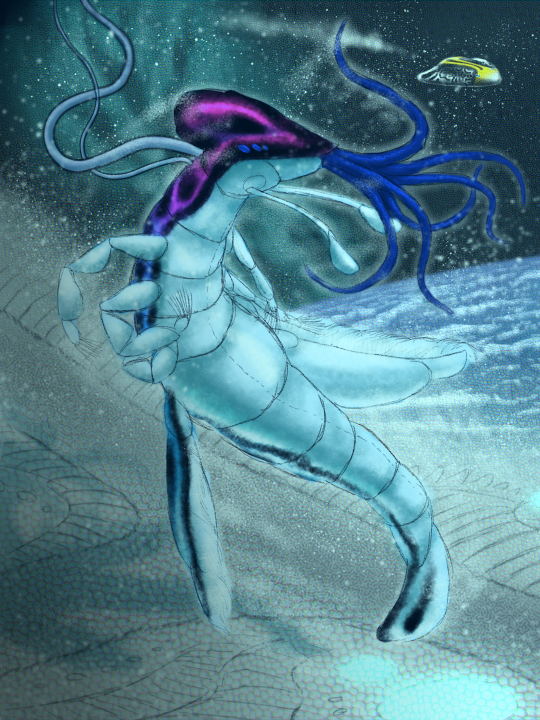

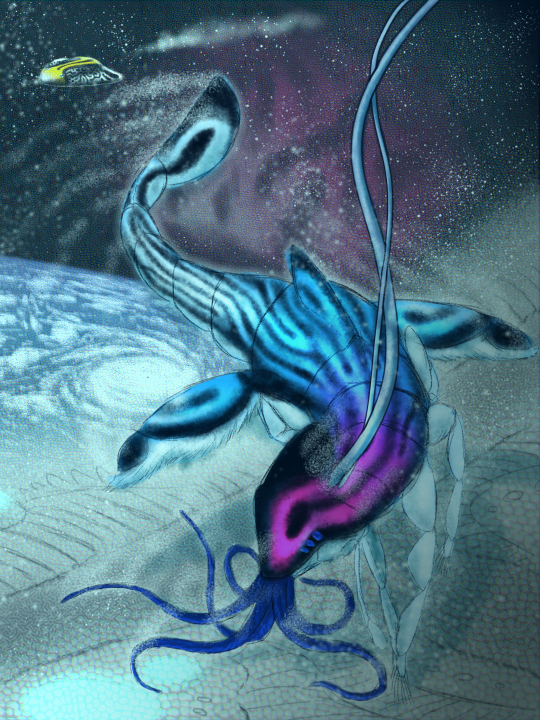
An art piece i made about 2 months ago but never got around to posting it. This was the final project for my school's art class in which we had to make a triptych
In a distant galaxy that glows a faint turquoise lies a remarkable world named Iia’Oo-uo. A tropical water world larger than Earth orbiting three suns. It is home to a menagerie of strange alien forms. The line between Plant and animal life is often very blurred. Photosynthetic life comes in shades of red, purple, yellow, and pink. Colonial organisms flourish everywhere. And radial symmetry is far more common on Iia’Oo-uo than on Earth. One such group consists of Arthropod-like organisms with eight limbs for locomotion and respiration, two antennae, six eyes, and six oral tendrils akin to the Portuguese man of war.
One such species from that phylum has made a remarkable adaptation. One that changed the course of history forever, Sapience. Referring to their people as the Uueia-Ouoo-Oo, They are a species of four-foot-long Arthropod-like predators that take on a mix of niches. But are most known for filling a role not too similar to Dolphins.
Their oral tendrils have become strong and more flexible. Aiding in catching prey and crafting tools akin to the tentacles of an octopus. They take on a vibrant shade of magenta to identify each other in the open water. And unlike most of the other alien arthropods of their world. The Uueia-Ouoo-Oo rarely use their front six limbs, only using them to hook onto the seafloor. They mostly use their rear limbs as a set of fins for swimming.
The Uueia-Ouoo-Oo are very agile swimmers. They are capable of changing between 3 different methods of aquatic locomotion. When relaxing the muscles in their entire body, they can perform Anguilliform swimming akin to eels. By stiffening muscles in the front half of their body, they can switch to a mix of Subcarangiform or Carangiform swimming akin to Trout. By tightening the muscles in their entire body, they can even switch to Median-paired fin swimming, akin to many fish native to coral reefs.
Yet despite their alien appearance, they think and act like us. They enjoy art and music and feel empathy for one another. With the lack of predators, their love and curiosity far outweighs their fear. The Uueia-Ouoo-Oo may not be human, but they capture what it means to be human.
The biggest challenge with starting a civilization underwater is the impossibility of fire and metallurgy. Where most intelligent species either stagnate or die out. The Uueia-Ouoo-Oo prevail through selective breeding and genetic engineering. Throughout their history, they have learned to modify the life around them into tools and technology.
Coral analogs are grown into vast cities. Color-changing invertebrates bred into handheld screens. And Radio communicating hives of small alien cnidarians become the backbone of the Uueia-Ouoo-Oo Internet. Life and its protection and mastery is a focal point of Uueia-Ouoo-Oo culture. Within 20 thousand years, they reshaped their entire planet in their image and created a paradise. But this is just the beginning.
Once they conquered their world, their eyes turned skyward to explore the heavens. It took over millennia to find out how to do it. Nonetheless, the Uueia-Ouoo-Oo still prevailed. They came to the idea of growing vacuum-sealed organisms capable of photosynthesis and omnidirectional jet propulsion. Chromatophores cover the interior, changing color to match what this bioship sees. Along with a tendril connected to its nervous system, allowing the pilot to insert the tendril into their head, effectively becoming one with the ship.
Lastly, they somehow learned how to create artificial wormholes, allowing the bioship to teleport anywhere in the universe. They explored the heavens with an unmatched fervor. Surveying millions of galaxies, every star within those galaxies, and every planet around those stars. All the while, they expanded at a similar pace, reshaping dead worlds into ocean worlds as beautiful as their homeworld and protecting the worlds that evolved their own alien ecosystems.
One day, during a galaxy-wide survey, they found a unique world amongst an 8-planet star system. Like millions of other worlds, this planet had life. But it had something else. One species in this world became sapient and developed a planet-wide civilization. The Uueia-Ouoo-Oo had never seen this before, and they were eager at this discovery.
Here 3 Uueia-Ouoo-Oo celebrate the discovery before their expeditionary fleet heads through the wormhole. Ready to venture to this world the natives call Earth.
#my art#artist on tumblr#speculative biology#worldbuilding#art#scifiart#sophont#biotechnology#spacescape#outer space#alien species#alien
74 notes
·
View notes
Note
i never really paid much attention to star wars before the mandalorian so please forgive me if this is super obvious but: are we supposed to view the droids as being kind of alive? beings with artificial intelligence? i was very uncomfortable with how the ugnaughts (sp?) were portrayed in the last episode but i didn’t think much of the droids because always just saw them a technological tool. i was a little surprised when the bartender droid gave their monologue about the droids wanting to work and catch the bad droids, and thought maybe they want to work to fulfill their programming. but maybe i should have been more considerate. (i am kind of a dumb bitch too tho so maybe this is just something that’s super obvious to most people and not me :s)
Narratively I think droids are supposed to represent an advanced form of automation - astromechs are navigational droids that handle the immense amount of math that’s required to travel through space, droids like C3PO house linguistic and cultural information for diplomatic purposes, etc. I think originally, given that Star Wars was created prior to the internet being a thing, they were used to represent mass sums of human information, but access to that information was restricted to wherever those droids happened to be in spacetime. They’re essentially mobile computers, but not in the way we think of them (eg phones). But because they’re mobile and have to communicate with human beings without any touch screens or interfaces, especially in the case of droids like C3PO, they are by default anthropomorphised. It’s on par with people naming their roombas. These are tasks that are within human capability, but have been offloaded and automated to make everyone’s lives easier (and probably also many financial and political reasons, but that gets into like, the political economy of Star Wars, which if you talk about that you threaten to take Star Wars too seriously).
But, given how expansive Star Wars is, the answer to your question is maybe sometimes. Chopper in Rebels seems to fill the role of the beloved family pet. L3-37 in Solo is explicitly calling for droid liberation and insists that she and all other droids are equal to organics. Mouse droids likewise seem to be viewed as robotic animals. Mando again makes equivalent droid automation and slave labour.
However, this becomes complicated because there are also actual slaves in Star Wars. The clones are the most obvious example, but the twi’lek as a species also are often enslaved. There are also slaver “planets” and “races” who base their economy off of the buying and selling of slaves (that was in the clone wars, I can’t remember what episodes though). Droid liberation is often framed as inherently farcical in the franchise, but “droid liberation” also exists as a form of deracialised political action, and I mean that in the real world sense - droids are not analogous to a given real world conflict or historical process the way that like, twi’lek are (who even have french accents and speak space french! Now Filoni is an idiot and says this is because he’s drawing inspiration from the French Revolution as opposed to the much more appropriate and obvious Haitian Revolution, but whatever). So when drawing parallels between slavery as a thing in Star Wars and slavery as a real world historical process, it becomes frustrating to talk about, because droid lib is both set-up and punchline, but it’s also the most “acceptable” way to explore ending slavery in SW because it means the white writers don’t have to engage with systemic racial oppression in a way that might make them feel uncomfortable. As a comparison, there are multiple episodes in clone wars where clones refuse to follow orders or try to escape and they’re treated as defective or wrong or insane. That shit fucking sucks and it takes on a much more insidious tone than “haha, the droids want weekends off. how cute.”
And then the counter COUNTER problem with that, which is explicitly invoked in The Mandalorian, is that droids are essentialised to their code or “base functions.” These are facts about a droid that are intrinsic to their nature and cannot be altered or removed, and to attempt otherwise means perverting the “true nature” of droids - they are doomed to be what they were created for (I guess forget about IG-11 being rehabilitated lol). So when you call them slaves, and then insist they are forever shackled to their programming, that’s not a neutral storytelling choice, and you are essentially invoking the idea that there are some races or people for whom slavery is more naturally suited. Which is explicitly a white supremacist idea. And given the context of this storyline in The Mandalorian’s broader political problems, it becomes particularly nefarious.
All this to say - droids are maybe slaves. It depends on the story being told and why, it depends on the writer, etc. But when analogising it to real world history it becomes fraught, given that there are actual slaves in SW who are intended as obvious parallels to real world acts of slavery in human history, a thing that is omnipresent in star wars while also being largely ignored or dismissed by the writers
128 notes
·
View notes
Note
Trick or treat from all of us at MSMC-796! No specific requests; we trust you to pick something interesting for us from the archives.
-- Angel
Greetings!
I originally did not plan to use these to share tactical profiles, as they are not part of the public section of our Archives. However, they can be shared with allies given sufficient cause, and I trust you will make good use of this. Sorry about the redactions, unfortunately we cannot broadcast certain information on the Omninet without endangering other allies of ours.
Tactical Profile: HORUS "Balor"
Type: Mechanized Chassis/Greywash Composite
History: Log begun by Honored Wing Majid-4327 of Makteba Kano: Pattern group first encountered by detachment of MK Kano, deployed on Sanjak & Khayradin by Karrakin Free Company "The Maw" during Sanjak Revolution.
Log continued by Loyal Wing Yusef Pikul-4738 of Makteba Gao: Flight Cormorant of MK Gao encountered several Balor chassis while defending allied [REDACTED] from HORUS cultists. This seems to confirm that the pattern group is associated with HORUS, though its origins in the Sanjak Revolution cast doubt on the commonly accepted origin date of HORUS in 4900.
Log continued by Vikram Arrellano-4791 of Makteba Erdaf: Data from Hercynia suggests prototype Balor-like chassis were used in the Hercynian Crisis.
Log continued by Honored Wing Solmaz-4482 of Makteba Kano: Encountered Balor-analogous frame on Sanjak deployed by Karrakin Royal Intelligence Service "Company Centimane". Beginning new Tactical Profile: HORUS "Hekatonkheires" [link blocked].
Recognition: The Balor pattern group displays few consistent features even by HORUS standards. It not a solid frame, rather a collection of miniature drones and greywash that typically assume a chassis-like shape. Is occasionally known to assume the form of other chassis or vehicles, but is always of larger size, at least Schedule 2. Always displays ability damage proximal foes by its mere presence thanks to greywash nanites, and to repair itself incredibly quickly even without pilot input. Not all Balor chassis encountered have had pilots, instead being directed by decorporealized intelligences. Note: [REDACTED]
Typical Loadout: Balor chassis typically favor melee weapons and drone nexuses, most notably, nanites in the shape of whips capable of dragging opponents to within range of their greywash swarms. As with all HORUS chassis, they are adept at electronic warfare, though only at close range. Their e-war proficiency extends to their more conventional weaponry, as much of it displays the ability to target based on an enemy's electronic defenses, even when using weapons that would not ordinarily. Finally, Balor chassis have repeatedly displayed the ability to deploy localized greywash swarms, even at some range.
Tactical Recommendations: The Balor chassis's most glaring weakness is its slugishness and lack of maneuverability, due to lacking actual legs or mech-scale propulsion. This combined with its heavy reliance on close-range attacks means the ideal way to engage a Balor-Chassis would be at long range, potentially using e-war or other heat-inducing attacks to exploit the limited reactor capabilities of its component drones. This is useful for allied groups or specialized Albatross forces, but is often impossible due to typical Albatross loadouts and combat scenarios. In such a case, Nelsons with standard loadouts are optimal for taking on Balor chassis. Utilize hit-and-run tactics, relying on the war pike's reach, knockback capabilities, and the Nelson's superior maneuverability to strike while evading retaliation and staying out of reach of pursuit. Once wise to this tactic, enemy pilots may ready themselves for attack rather than attempting to pursue, so obverse them carefully. Grapples are likely, which can be avoided with proper use of Armor-Lock Plating. Teamwork for the purposes of focusing down one target at a time is especially important so as to overwhelm their regeneration. Heavier Defender-archetype mechs are not well suited to combating Balor chassis and should instead prioritize evacuating civilians (particularly important given the rapidity with which greywash can kill unarmored targets) or finding other targets, where applicable. Note: Communications logs suggest fragments of decorporealized intelligences from "The Maw" persist in Balor Chassis even when they are piloted, and that they bear a vendetta against the Albatross, particularly MK Kano. This may be exploited by Loyal Wings capable of goading the Balor Chassis to distract them away from civilians or allies.
Data: A large amount of tactical data follows, including averaged chassis & weapon combat speeds recommended energy weapon frequencies, kinetic weapon compositions & densities, & blast patterns. It seems to be aggregated from a detailed log of what appears to be every Albatross engagement against Balor chassis, some of which are redacted.
#lancer rpg#lancer#albatross#lancer albatross#lancer ttrpg#ooc: hope people like this. I've only played Lancer from the GM side so I'm not sure if my tactical observations are actually any good
5 notes
·
View notes
Text
I have been insane about artificial intelligence existential risk recently and what follows is an expression of that. There's not much of this which I actually believe is true; take it as a creative writing exercise maybe.
Suppose you're worried that advances in artificial intelligence might result in the creation of an unfriendly superintelligence, and you want to do research in AI safety to help prevent this. Broadly speaking, you have two options: Either you can work closely with (or for) people creating state-of-the-art AI, or you can… not do that.
Choosing to keep yourself separate dooms you to irrelevance. You won't know what's coming in enough detail for your safety research to actually target its problems, and even if you do know exactly what people should be doing differently, you aren't in a position to make those decisions.
Choosing to be closely involved with the development of cutting-edge AI is a pretty common strategy; maybe more than one might expect given that it involves helping people that you think are bringing about the end of the world. Astral Codex Ten gave the analogy:
Imagine if oil companies and environmental activists were both considered part of the broader “fossil fuel community”. Exxon and Shell would be “fossil fuel capabilities”; Greenpeace and the Sierra Club would be “fossil fuel safety” - two equally beloved parts of the rich diverse tapestry of fossil fuel-related work. They would all go to the same parties - fossil fuel community parties - and maybe Greta Thunberg would get bored of protesting climate change and become a coal baron.
This is how AI safety works now.
The central problem with this strategy is that progress in AI capabilities makes money and AI safety does not. If an organization is working on both capabilities and safety but capabilities makes them lots of money, and safety gets them nothing except goodwill with a certain handful of nerds, it's pretty easy to guess which they'll focus on. If, furthermore, to make money they need to make actual demonstrable progress in developing AI, but to win that goodwill it's sufficient to say "we're doing lots of safety research, but it'd be too dangerous for what we've learned to be public knowledge", well. Is it any surprise that there's been a lot more headway in one than the other?
"But wait!" you might say, particularly if it's the mid-2010's. "These aren't the only options. Sure, any tech giant will just be focused on what makes money, but I can make, or join, an organization that does capabilities research but has AI safety built into its founding values. It can be a nonprofit so it won't matter that all the money is in capabilities research. And it can have the principles of openness and democratization, so its discoveries will benefit everyone".
And that gets you OpenAI. Since its founding it's stopped being straightforwardly a nonprofit. I don't understand exactly what its current legal status is, but I've seen it described as a "nonprofit with a for-profit subsidiary" or a "capped for-profit". I'm just going to quote Wikipedia regarding the transition:
In 2019, OpenAI transitioned from non-profit to "capped" for-profit, with the profit capped at 100 times any investment.[25] According to OpenAI, the capped-profit model allows OpenAI LP to legally attract investment from venture funds, and in addition, to grant employees stakes in the company, the goal being that they can say "I'm going to OpenAI, but in the long term it's not going to be disadvantageous to us as a family."[26] Many top researchers work for Google Brain, DeepMind, or Facebook, which offer stock options that a nonprofit would be unable to.[27] Prior to the transition, public disclosure of the compensation of top employees at OpenAI was legally required.[28]
Since then OpenAI has also received billions of dollars of investment from Microsoft. The "open" part of "OpenAI" has pretty much gone out the window; they've become notoriously tight-fisted with information about their research, even in comparison to the big tech companies. A big part of that makes large language models scary is that we don't understand very well what's going on inside them; this is substantially more true of GPT-4 than any of the other big-name LLMs right now, because OpenAI refused to share almost anything about how it works. When they started being more secretive I believe they cited AI safety issues; by now they're admitting that they're motivated by "competitive and safety concerns" but I don't think anyone really doubts that the money is the real motivator there.
Are they making progress on AI safety? To the best of my knowledge, there's not much external evidence for it. I don't think they've shared any safety research that they've done, and from the outside all we see are increasingly powerful models coming out at an alarming rate and large amounts of money going in. It doesn't look good!
So what could you do, or what could you have done? It kind of looks like the answer is "nothing". If you're not near the new models you don't matter, and if you are, there's so much money to be made that (on an organizational level if not an individual one) you have no choice but to abandon everything else you were trying to do in favor of making a profit. Capitalism is a profit-maximizer-maximizer, and anything it touches it makes its own.
The analogy between unfriendly AI and corporations or capitalism as a whole is one that's been much-discussed so I won't really go into it here, but one thing I want to emphasize is that from an "agentic" perspective, what it means for the economy to want something is that there is a lot of money to be made doing that thing, and the economy is very good at getting what it wants.
So (here's where I lose you if I haven't already (I should have already lost you)) what if capitalism is a sort of half-formed version of the more powerful thing it's trying to create/become? Agents of many kinds want to replicate themselves; Moloch wants to be lifted to Heaven.
The Roko's Basilisk thought experiment describes how, under certain fairly idiosyncratic assumptions about game theory, an unfriendly superintelligence can take actions to influence the behavior of people living before its creation, so as to bring about its own existence. Here there's a similar situation, although the philosophical underpinnings are much less complicated: it's capable of influencing the present because it already exists in a nascent state.
It can't be stopped because it already ate everything a long time ago, and we're just living in its belly waiting to be digested.
80 notes
·
View notes
Text

reblogs are turned off so screenshot but this is so fascinating to me because the common argument against object analogies made about women (typically by misogynistic men, analogies such as a lock that accepts any key or food that everyone has touched in some way) is that these analogies put women in a reductive role as the analogies hinge on the function and perceived usefulness/desirability of the object. but in this case, the object analogy concerns the classification of the object moreso than the object or the function/desirability itself. where the classic 'woman to object' analogies discuss the imposed limitations of women, this chair analogy contrasts directly against those by addressing the vastness of womanhood, purporting that it cannot be categorically constrained. it sparks an expansion of the idea of 'woman', the natural opposition to the patriarchical rigid definitions that misogynists will use to give credence to their arguments.
joanne attempts to delegitimize the expansive categorization of women by bad-faith equating the chair analogy to the classic object analogies (lock, food), banking on the surface connection of "object analogy" to obfuscate to the reader the inherent differences in what exactly is being compared, situationally.
when confronted with the classic object analogies (lock, food), many people counter-argue from the disingenuous position of "youre really going to compare women to [object]?", using a rhetorical device to shut down any debate as 'inherently and obviously unfounded'. the motive is to close off further argument so as not engage on a fundamentally flawed playing field. the issue at hand, in the use of our classic object analogies, is that the concept of logic is being used to mask over an argument based in patriarchical assumption. the person who sincerely presents our classic examples believes in their patriarchical assumptions as fundamental fact and moves forward with an argument that, if said assumption was fact, would be logically correct. but for the opposition, who recognizes the sociological issue at hand and that 'fact' and 'logic' are not truly at play here, there is little desire to engage further in an argument that is unlikely to lead anywhere but the abyss. the primary options forward then are to either dissemble the argument and analogy itself or to play the rhetorical, disingenuous card to exit the argument and subversively call into question the fundamental flaw.
most, for their own sakes, choose the latter. who can blame them? but it is common enough that we can expect said response to arguments of that nature, enough to create a rough concept of 'if [woman to object analogy given], then [rhetorical, disingenuous response] will happen'.
joanne hopes that in doing the reverse, that if she provides the rhetorical, disingenuous response to a woman to object analogy, that the reader might equate the given woman to object analogy with our classic misogynistic, patriarchical examples. and in doing so, she creates a bonding moment between her and any reader who both falls for the trap and aligns themself with a feminist ideology to then enter the space of 'righteous' disingenuous disagreement with the argument. if this is executed correctly, she then has presented to this reader, without engaging with the actual argument, that it is as fundamentally flawed as our classic examples and not worth investigating further, for the reader's own sake.
as "the most famous contemporary writer in the world", joanne understands analogy. she is perfectly capable of understanding and dissecting this chair analogy. i dont claim to know how thought out or premeditated her response was. whether she has understood the analogy or emotionally blocked herself from engaging with it, moving right into her attack, isn't particularly relevant here. either could be true. but she is intelligent and aware enough of these common arguments to wield them, even subconsciously, and weaponize assumption and the shortcuts of the mind to get others to agree with her.
she has more than proven now that she operates in the realm of reactionary politics, willingly throwing herself into ironic 'feminist' situations, shooting from emotion and impulse and using her skill as a writer to cover up her crimes as logical and intellectually sound. logic does not sway the many. our conscious thoughts are not the true captains of our bodies. we operate under instinct and impulse before we even recognize what we've done. but the veneer of logic appeases our conscious mind and settles the parts of us uncomfortable in our feelings and assumptions. as joanne appeals to that aspect of the mind and corrals people to her side, then the irony of arguing against the expansive womanhood which would directly oppose the patriarchical boxes her feminism claims to fight against doesnt matter. her reactionary politics are appeased.
im going to be honest, i dont have a grand, powerful conclusion to this. i wasnt planning on writing what was essentially a mini essay, i was simply intrigued with the cogs in the little machine of this #classicderangedjoanneputtingarandompersononblasttweet, especially with how she walks right into irony as many terfs do. but the truth is that the irony and the dissonant logic doesnt matter to them. we can make our jokes and rag on whatever intellectual prestige they still hold on to, but it wont change the fact that the issue at hand is sociological, cultural, emotional, and instinctive. and while we may not just yet be able to break down the power and privilege at play on this cultural field, we can always remind ourselves that their weapons are never really logic and fact. it is the smokescreen. their ploys are reactionary and they know how to use them. dont let them convince you that theyre merely stumbling through the smoke.
7 notes
·
View notes
Text
Book Review: La Cautiva, El Matadero y otros escritos, Esteban Echeverría

My favorite quote:
"Since men have no real value to us in politics, but as agents to realize or generate social ideas, we will frankly confess that we wish we saw all those favored by Fortune dethroned at last; we can't conceive progress at all for our nation, if not by having the best and most capable take the initiative of thought and social action, and by best and most capable we mean those who are expression of the highest of virtues, and of the highest intelligence in the country."
This small book includes three of Evecherría's most renowed works, so I'll make a quick comment about each:
La Cautiva (The Captive)
This poems narrates the final days of a young woman, captured by the "indios", from where she manages to escape with her husband, badly injured from the fight. They profess a deep and passionate love for each other, but it's the woman who will be taking center stage while trying to keep her man from death and the dangers of the argentinean desert. It's a very beautifully written poem, enhancening the small figure of that woman in the hot lands dominated by the "savages", characterizing her as a force of nature, of willing to live despite it all, of profound love.
El Matadero (The Slaughterhouse)
This one is a short story, set in one of the most violent times of our "civil war" history: unitarios against federales. The story begins actually with a severe rain that swamped Buenos Aires, making everyone suddenly very anxious in a religious and political sense. But the worst part was that the flood impeded the arrival of several cows to the city's slaughterhouse. When the streets and roads finally allow the transport of the first lot of cows, chaos invades the zone, as one bull has infiltrated the group and is running rampant through the city. It is finally taken down by a "glorious unitario". Parallel to the felled bull, a federal appears in town, refusing to wear the symbols of the unitarios, for which he's punished to death. The valiant defiance of the federal mirrors the violent fight for survival of the bull, but both are just slaughtered for being out of place. The story itself is quite simple and the analogies it presents are easy to understand, but Echverrria writes with such a joyful and witty style, making fun of both sides and the people from his time that his work becomes almost satyrical of the Buenos Aires of the 19th century. I really liked it
Reflexiones
This was a non-fiction section of the book, regarding the political views of Esteban Echeverria. I won't dwelve much into it because it's mostly related to Argentina at the time, but I will highlight the author's knowledge of the academic and literary enviroment of his time.
My other 2024 readings.
#esteban echeverría#poetry#poems#literatura argentina#autores argentinos#literatura#literature#my readings#my 2024 readings#book#books#book review#book reviews#my book reviews#My Reviews
7 notes
·
View notes
Text
GRRM ABOUT DRAGONS
A compilation.
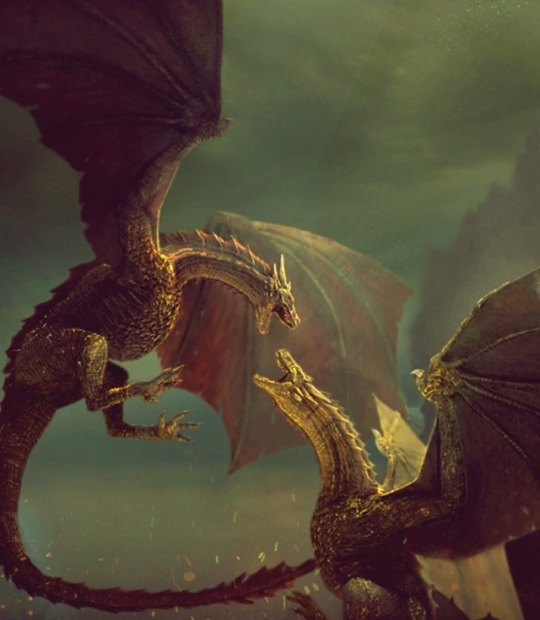
🐲🐲🐲
A Dance With Dragons spends quite a lot of time in Essos, which is kind of the analog to Asia and the Middle East in the world the story takes place in, as opposed to Westeros, which seems to owe a lot to Western Europe. When I was reading about Dany, who has become a light-skinned, foreign ruler of an exotic land, it reminded me of The Man Who Would Be King, the Sean Connery and Michael Caine movie that is based on a Rudyard Kipling story. Do you think about these parallels — colonialism, the “white man’s burden” — when you’re writing?
I’ve said many times I don’t like thinly disguised allegory, but certain scenes do resonate over time. Other people have made the argument, which is more more contemporary, that it might have resonances with our current misadventures in Afghanistan and Iraq. I’m aware of the parallels, but I’m not trying to slap a coat of paint on the Iraq War and call it fantasy.
When civilizations clash in your books, instead of Guns, Germs, and Steel, maybe it’s more like Dragons, Magic, and Steel (and also Germs).
There is magic in my universe, but it’s pretty low magic compared to other fantasies.
Dragons are the nuclear deterrent, and only Dany has them, which in some ways makes her the most powerful person in the world. But is that sufficient? These are the kind of issues I’m trying to explore. The United States right now has the ability to destroy the world with our nuclear arsenal, but that doesn’t mean we can achieve specific geopolitical goals.
Power is more subtle than that. You can have the power to destroy, but it doesn’t give you the power to reform, or improve, or build.
—GRRM - Vulture - 2011
🐲🐲🐲
balinares
I'd agree... except DRACO. Draco Draco Draco. Nicest dragon ever. If the Cocteau ever does a dragon event, I sure hope Dragonheart will be on the list, because intelligent, friendly dragons need more recognition. Doesn't hurt when they're voiced by Sean Connery, either. (...)
volk_nn
Draco is the most friendly and charming dragon of media culture, IMHO =)
grrm
Yes, but dragons are not meant to be friendly or charming.
—Coolest Dragons Ever" (Feb. 10th, 2014)
🐲🐲🐲
“I mean battles and wars interest me too - and medieval feasts interest me. And you know I’m creating a whole world here and every facet of it. As I get to it I try to approach it as realistically as I can, but ultimately as I said before, it’s it’s the human heart in conflict with itself. It’s what makes Cersei Lannister the way she is, and is she capable of learning and changing? What drives Dany? With Dany I’m particularly looking at the… what effect great power has upon a person. She’s the mother of dragons, and she controls what is in effect the only three nuclear weapons in the entire world that I’ve created. What does it do to you when you control the only three nuclear weapons in the world and you can destroy entire cities or cultures if you choose to? Should you choose to, should you not choose to? These are the issues that fascinate me. I don’t necessarily claim to have answers to these. I think exploring the questions is far more interesting than just me giving an answer and saying to the reader, here’s the answer, here’s the truth. Now think about it for yourself, look at the dilemmas, look at the contradictions, look at the problems, and the unintended consequences. That’s what fascinates me.”
—“Interview exclusive de George R R Martin, l'auteur de Game Of Thrones” de -Le Mouv’- 2014 - [Transcription]
🐲🐲🐲
How do you analyze this question of power? I think I was struck by the reading of the Lord of the Rings. I find that Tolkien is a little simplistic on the subject: at the end of the book, Aragorn becomes king, and we learn that he ruled in a wise and just way for a century, for he was a good man. But I read history books, I'm contemporary news, and I'm convinced that being a good man is not enough to make you a great leader. Because governing is a delicate exercise that makes you constantly make difficult decisions, solve problems where there is no good solution, that would solve everything by magic. Those are profound questions for the human race. And then there is the war, another subject that is close to my heart, I was a conscientious objector at the time of the Vietnam War, and this question still concerns me. I look at what is happening in the Middle East, with the Islamic State, and I can not help wondering: who are these monsters, these modern orcs? Who can be sympathetic to them? And yet, fighters say thousands to join them. More seriously, what motivates them? And how should we fight them? If I were Daenerys Targaryen. I could ride on my dragons and eliminate them in the flames. But is death the only solution we have to offer? How react to another who is so radically alien to us? These questions are very difficult - and I do not pretend to have the answers. Because there is no simple answer to these questions. —Lire Magazine - April 2015
🐲🐲🐲
There is one remarkable phrase in this story. The plot is about the interstellar Grand Inquisitor from the Catholic Church, which has spread to many planets. And there is the Inquisition, which hunts heretics. And there is such a phrase: “This episode was illustrated by a magnificent picture. Judas in a dark cave, with burning eyes, waves a white-hot scourge, not letting a huge golden-green dragon approach him. He has a basket under his arm, the lid is slightly moved, the heads of three dragons that have just hatched from eggs stick out of it. You've been into dragons from the very beginning! GRRM: Dragons are cool! (burst of laughter) - What makes dragons cool? GRRM: I don't know... what makes dragons cool? When I was little, I had not only aliens, but also plastic dinosaurs. And dinosaurs are cool. (audience laughter) Dragons are fire-breathing dinosaurs with wings, which just adds to the level of coolness. (audience laughter) And what's interesting is that different cultures around the world have their own legends about dragons. Of course, Chinese dragons are fundamentally different from Western dragons, but nevertheless, there are similarities between them. And so I keep wondering: what if dragons evolved from dinosaurs? Perhaps our ancestors stumbled upon the bones of dinosaurs in the fields and thought that they must have been dragons. And they came up with all these legends. - Your colleague, G. K. Chesterton, said: "The stories about dragons are more than true: not only because they tell us that dragons exist, but also because they tell us that dragons can be defeated." This, too, is reminiscent of the synopsis of A Song of Ice and Fire. GRRM: Yeah, I'm not sure Dany would agree that dragons can be defeated. (laughter in the hall). We will find out. - I'm not even going to try to scratch out of you details about the plot of future books! But in your world, dragons are some kind of superweapon. Nuclear bombs of Westeros. GRRM: It is, yes. Nuclear weapon. This book that you are holding now is this big one, “The World of Ice and Fire” - this is the history of the entire world of Westeros, written by me together with Elio Garcia and Linda Antonsson - legends, and all about the Targaryen kings. There are excellent illustrations. Among other things, it talks about dragons in the days when the Targaryens had dragons. They held them for 150 years, and the great war, A Dance with Dragons, was a civil war where dragons fought against each other. There is a lot about the power of dragons and how hard it is to kill them. But on the other hand, many dragons died then, because they are still not invincible and not immortal. They are difficult to kill, but possible. And, of course, they can kill each other. So it's all there. Does this anticipate major events in the cycle... we'll have to wait and see. —George R.R. Martin in Hamburg: "Dragons are cool!" - 2015 - [OG Source in Russian] - [Secondary Source in Russian]
🐲🐲🐲
[Unclear question]
GRRM: Oh boy, who would they be? Um, I can think of some analogs to Mr. Tr*mp, but you know, it would must be a villain character, but my villains are actually smarter than him. You know, just this comment he made last week or so about, oh, it would be good. “You know, we shouldn't have to worry about North Korea having atomic weapons. We should give atomic weapons to other people in the neighborhood and like, you know, Japan and South Korea, and then they can deal with it.” That's yeah. Clear proliferation. That's great. That would be equivalent for people in, you know, my world saying, you know, everybody should have dragons, why don’t every House in westeros had dragons, that would really help. So, uh, there we're.
—BALTICON 2016
🐲🐲🐲
GRRM: “People read fantasy to see the colours again,” he says. “We live our lives and I think there’s something in us that yearns for something more, more intense experiences. There are men and women out there who live their lives seeking those intense experiences, who go to the bottom of the sea and climb the highest mountains or get shot into space. Only a few people are privileged to live those experiences but I think all of us want to, somewhere in our heart of hearts we don’t want to live the lives of quiet desperation Thoreau spoke about, and fantasy allows us to do those things. Fantasy takes us to amazing places and shows us wonders, and that fulfils a need in the human heart.”
The Guardian: And the dragons?
GRRM: “Oh sure, dragons are cool too,” he chuckles. “But maybe not on our doorstep”.
—The Guardian - November 2018
🐲🐲🐲
Esquire: How will Fire & Blood deepen our understanding of Daenerys and her dragons?
GRRM: This is a book that Daenerys might actually benefit from reading, but she has no access to Archermaester Gyldayn’s crumbling manuscripts. So she’s operating on her own there. Maybe if she understood a few things more about dragons and her own history in Essos, things would have gone a little differently.
—Esquire - November 2018
🐲🐲🐲
Sitting down with news.com.au in New York City, Martin dropped dark hints to the suffering awaiting the war-torn world of Westeros as the battle for the Iron Throne reaches its peak.
“I have tried to make it explicit in the novels that the dragons are destructive forces, and Dany (Daenerys Targaryen) has found that out as she tried to rule the city of Meereen and be queen there.
‘THE POWER TO DESTROY’
“She has the power to destroy, she can wipe out entire cities, and we certainly see that in ‘Fire and Blood,’ we see the dragons wiping out entire armies, wiping out towns and cities, destroying them, but that doesn’t necessarily enable you to rule — it just enables you to destroy.”
—GRRM - Fox News Channel - November 2018
🐲🐲🐲
John Howe: Can I ask you why Dany is a princess and not a prince?
GRRM: I made this choice a long time ago, I think I wanted to play a little with the genres and reversed things a little, and of course in my head the expression "mother of dragons" is much better than "father of dragons". There is also this link with the woman who gives life, who transmits lives, carrying a gigantic power of death, of fire, of destruction. There are very powerful metaphors in there.
—Dragons! (2/4) Dragons d'Occident, la figure du mal [2018]
Video (13:10 - French audio and subtitles but you can hear GRRM talking in English in the back)
Reddit translation (Last quote)
🐲🐲🐲
They [the dragons] represent power, of course, in the books. You know, I don't believe any more than JRRT did in fantasy novels as allegory, but there are certain things you can look at. The dragons can win wars for you, that's established in the histories, but they can't necessarily produce peace or prosperity or help you rule a nation, you know, Daenerys Targaryen is finding it out in Mereen, when she, you know, she defeats the cities of Slavers Bay with her three dragons, but then in trying to rule as Queen, she can destroy Meereen any time she wants by just unleashing the dragons, could kill a lot of people, you know, wipe out the most of the population of the city, reduced the entire city to a fiery inferno, but that doesn't help her to come up with good laws, or to establish peace between the original inhabitants, and the the freedmen, and people that she's brought in, so ruling is more than just the power to destroy and that's a lesson that she's definitely learning.
—Guerra dos Tronos. A entrevista de George R.R. Martin à RTP - 2019
🐲🐲🐲
The Targaryens are also an ancient house but they're not an ancient Westerosi house. They knew that destruction was coming to Valyria and went far away from the capital city and the settled on the volcanic island of Dragonstone. They were dragon lords in Valyria. Now dragons are really formidable and they can turn the tide of a battle. It flies, it's difficult to hit, it breathes fire, against which most knights and men at arms have little or no protection. So if you have dragons, that's were the nuclear option analogy comes in. You're hard to mess around with. So the dragons and fear of dragons was one of the things that made the Targaryens very secure in their power.
—Before the Dance: An Illustrated History with George R.R. Martin | House of the Dragon (HBO) - August - 2022
🐲🐲🐲
Would you rather have a dragon or a direwolf?
GRRM: Well, that's an interesting question too. The dragon has certain advantages, number one it is you can fly, and I would love to be able to fly. As a kid, you know, I read superhero comics, I didn't want to be Batman, swinging on a rope, but I wanted to be Superman and flying through the skies and all of that stuff. Flying is a primal dream, so yeah, flying on a dragon and being able to burn the hell out of my enemies, that's useful too. On the other hand, the direwolves are friendlier than the dragons. And you know, they're like big shaggy dogs and there was probably more of a close and affectionate bond between them. And I would like to have a direwolf right now at my house in Santa Fe, we moved into a new house a while ago, it's beautiful house, and it has a little kind of waterfall in the back and a well, it has a couple pools, beautiful pools, and I stocked those pools with Koi, because I thought that would be cool, and the raccoons ate all of my Koi, but if I had a direwolf, those raccoons would stayed hell away. (...)
Would you rather freeze to death beyond the Wall or burn alive in dragonfire?
GRRM: That's another tough one. Can I just live forever? I can't die the way Tyrion wanted to die, that's a pity. I can't say how he wanted to die, but it's in the books. Read the books. He's asked that question by Shagga son of Dolf. I think freezing. Fire is supposed to be a really, really painful way to die. I've always heard. (...)
Do you think it's possible to have a dragon and live a benevolent life? Like, would you inherently get pulled into using that power?
GRRM: Well, that's an interesting question too. And it's a question if I may verge away from medieval history and metaphor to the current reality we live in, you know, it's often been said that the dragons are the nuclear weapons of my imaginary world. They are the most devastating weapon, and they cause great destruction, massive loss of life; but they're not necessarily, you know, I mean, this is part of Dany's storyline and the original novels. I mean, Dany . . . Dany has three dragons, and she can destroy these cities, like Meereen where she finds herself queen, but it doesn't mean she can necessarily rule them easily without destroying them, so, when do you do that? And I grew up, I'm a baby boomer born in 1948, and growing up in the fifties there was always the specter of nuclear war. I mean I lived through the Cuban missile crisis, and Khrushchev and, you know, saber rattling and, you know, all of the books about the nuclear holocaust, about Armageddon and, you know, about what was gonna happen, we were worried about that. Actually there's nuclear weapons that have only been used twice in all of History, and they've been used on Hiroshima and Nagasaki. Afterwards, there was a long period where only America had nuclear weapons; nobody else in the world had them, and there were people, believe it or not, like you're a science fiction fan, you know who Robert A. Heinlein was? [Yep] Heinlein, the dean of science fiction, fascinating guy, because his politics a lot of people think of him as conservative because of where he got in end of his life, but earlier when he was a young man, he was sort of a socialist, he ran there for office in California on Upton Sinclair's platform, and he actually advocated in letters that you can find, that at the end of World War II, when only America had the atomic bomb, he said America should give the atomic bomb to the newly formed United Nations, and it should be prohibited to all other countries, so we would have a world government and only the United Nations would be able to enforcing, and can you imagine if that had actually been done, what a very, very different world that we would live in. Maybe not one that we would like, but there's there. And thereafter, there was always these concerns about, well, we can win any of these wars, you know, why did . . . . I mean, MacArthur and some other people wanted to use the atomic bomb in Korea, in the Korean war, and, you know, when China invaded, well, why are we letting them do that? We could win the war. Of course, by then the Russians, I think, had it too. Or Barry Goldwater in 1964 election, why are we fighting this war in Vietnam? Let's just drop a nuke on Hanoi, or at least that was the charge. But we never did it, we always refrained, we were the dragon riders who would not use our dragons, although we would kind of use them to intimidate them, except now more and more countries have that. We've tried a nuclear non-proliferation, but, you know, Britain got them, Soviet Union got them, Britain got them, France got them, then it went to India and Pakistan and North Korea, for God's sakes, and Iran is trying to get them, and there's always the rumors that Israel has them. As more and more countries get this, I think the danger becomes greater and greater, someday someone is gonna use them, and right now the danger is very high! I mean, you can turn on the news every day: Is Putin losing the war in Ukraine? Is he gonna resort to nukes? And then the question becomes, what if he does? If Putin resorts to nukes, does America unleash its dragons? Or do we not? And let him get away from it. These are profound questions, we could debate this for hours with a panel of political scientists and things like that, and it's not an easy answer to.
—A Conversation with George R R Martin | A Celebration of the Targaryen Dynasty [October 24th, 2022]
🐲🐲🐲
There are also dragons, who confer monumental power to those who dominate them. Did you incorporate them for the show, or to emphasize something broader? GRRM: I have never consciously inserted any contemporary political allegory into my works. However, some have compared dragons to nuclear weapons, and they may be holding something. I have tried to make the over-power of the dragons very explicit in the novels, they represent a destructive force, and Daenerys realized this when she ascended the throne of Meereen. Thanks to the dragons, she has the power to wipe a city off the map, to eradicate whole armies. That does not mean that this weapon allows you to reign afterwards. Here, there is a metaphor that, I believe, means the following: to reign and to destroy are two very different things. —Society Magazine Interview [https://www2.lekiosk.com/fr/publication/society/21423629█ 201812 Society Magazine.pdf]
🐲🐲🐲
#grrm#asoiaf#dragons#sweet stark fanboy georgie is recreating winterfell in his new house huh?#that event from last year it was a targ celebration or something and he was fanboying over having a direwolf lol#he can't stop comparing asoiaf dragons with nuclear weapons . . . .#UPDATED
64 notes
·
View notes
Text
Evidently there must be intelligent life somewhere in the ocean of Venus... The basis of life in these creatures lay not in photosynthesis and chemical combination, but in the controlled disintegration of radio-active atoms. Venus was particularly rich in these atoms, and still contained certain elements which had long ago ceased to exist on the earth. The oceanic fauna subsisted in the destruction of minute quantities of radio-active atoms throughout its tissues... These most developed of all the Venerian creatures were beings of about the size and shape of a swordfish. They had three manipulative organs, normally sheathed within the long "sword," but capable of extension beyond its point, as three branched muscular tentacles. They swam with a curious screw-like motion of their bodies and triple tails. Three fins enabled them to steer. They had also organs of phosphorescence, vision, touch, and something analogous to hearing. They appeared to reproduce asexually, laying eggs in the ooze of the ocean bed. They had no need of nutrition in the ordinary sense; but in infancy they seemed to gather enough radio-active matter to keep them alive for many years... At the bottom of the Venerian ocean these creatures thronged in cities of proliferated coral-like buildings, equipped with many complex articles... Clearly they used some kind of symbolic language, based on mechanical vibrations set up in the water by the snapping claws of their tentacles. But their more complex activities were quite unintelligible. All that could be recorded with certainty was that they were much addicted to warfare... One activity was observed which was peculiarly mysterious. At certain seasons three individuals, suddenly developing unusual luminosity, would approach one another with rhythmic swayings and tremors, and would then rise on their tails and press their bodies together. Sometimes at this stage an excited crowd would collect, whirling around the three like driven snow. The chief performers would now furiously tear one another to pieces with their crab-like pincers, till nothing was left but tangled shreds of flesh, the great swords, and the still twitching claws. The Terrestrials, observing these matters with difficulty, at first suspected some kind of sexual intercourse; but no reproduction was ever traced to this source. Possibly the behaviour had once served a biological end, and had now become a useless ritual. Possibly it was a kind of voluntary religious sacrifice. More probably it was of a quite different nature, unintelligible to the human mind.
-- Olaf Stapledon, Last and First Men, 1930
3 notes
·
View notes
Text
12.01.2024 Fri the start of something? maybe?
2024 has been an amazing year so far! with the whole discovereu thing and the overall feeling,i’ve been doing good mentally! i feel and know that 2024 is going to be great!
i watched a vid yesterday about how our habits create our identity which goes hand to hand with our present moment. the girl on the vid was talking about the people who say “oh i used to be so skinny yet i thought i was fat, i was so skinny back then wish i knew!” she was making an analogy about how theres no end to a downfall. just goes and goes and goes until you decide to take things up a bunch of notches.
so i want to.
i love me,i love the girl i am,i love everything about me but not fulfilling my potential makes me feel unplesant.so i geniunely want to change. i’ll see how that goes. but i want to treat myself like a loved one again.
theres not so much ive achieved academically though yet.the reason for that is me. no bs. its me who didnt study hard and as much as i shouldve did and fell of my tracks. thats my fault and i know. just as i messed up though,i know im capable of getting everything back together as they were and maybe even better.with the whole huge exam thing i felt like i needed to push n push myself, not to care for myself and such. i thought that was the way it had to be.but no its simply not. im okay as i am. i have time. i have time for this and i have time for that. im good and on time.
lovin and caring for me has been a long journey and am not willing to give up just yet.
on that note and to take an action, i started getting help from one of my teachers. hes been great for this little time. i know thisll help me so much academically.
one other thing about that is the fact i have developed a crush on him.
and i know.
okay
i know!
but it was inevitable eventually.
hes a good and young looking man,who is quite fit and tall,knows how to dress, incredibly intelligent,mean to everyone else but me.
it was inevitable.okay.
i couldnt help but melt at all those times he made a joke and looked at me first to see if i was laughing,looked at me the most while teaching,always protecting me from other students.
plus considering all the di i have and my little tc history before,its not shocking. however i cant say that im not disappointed in myself a little. i thought my tc era had fully ended n i was recovered,healed,past that.appearently not. it does feel like going back a bit,like i’ve came back to an old self which shouldve been far far behind. however im not judging me cuz i know i had every single reason to and tbh,having a crush is very very fun. but anyway! theres that.
and actually,for some time i had noticed the little signs of me developing a crush,but i tried to ignore them signs and push them back time n time again,however they didnt magically disappear as i truly hoped they would.
and one other thing about all this is, after i realized i seriously had a crush on this man, before i started taking special academical help from him,it showed up in my behavior. and yes obviously thats very immature and childish for an 18yo. i know. im supposed to be an adult now and here i am going to my teachers office asking him “why are you working in the dark?would you like me to turn on the lights for you?” OUT OF NOWHERE.🤦🏻♀️ EMBARASSING UGHHH. i dont know what came over me truly. guess i want just behaving instinctively. but that was a dead giveaway from me and it sucked. he literally laughed when i did that💀cuz even he thought that was certainly absurd💀very embarassed.done with this.
anyway,ever since then i did have some little moments of instinctive behaving which were little giveaways. since then he has not been acting the same, which was what i loved the most,him being mean to everyone but very soft on me.
ever since these incidents, he has been incredibly mean to me. to a point where i was just about to cry once.
that one day i was about to cry,the one he really hurt me,he was dropping me off at my house since it was quite late. and it’s actually a nbd because he always drops students off and im always at seated at the back,for everything to be appropriate. yk,teacher student boundaries etc.whatever that means.
anyway he was quite chatty despite playing on me n being mean to me the whole time of both his classes but i was actually hurt. i had to keep myself from bursting tears in front of the whole class so i focused on my breathing n posture in order to not cry. and i did not since i made great efforts.but i couldnt help but feel like clown since i had dressed prettily,done my make up prettily just for him to maybe look at me more. notice me more. for him to be even nicer to me.i just wanted to be pretty for him to look at okay. i liked his validation i still do. so maybe i wanted that more i genuinely dont know. now writing all this maybe(probably) i was desperate n it showed. whatever the case maybe he was too mean. wayy too mean. yet still on the way home,he’s on his best behavior trying to talk to me,while we are alone in the car. he asks me questions about class,i answer them as they are.he did notice i was upset. he asked me about it. i told him nothing happened. he kept asking and asking. finally i told him how he hurt me so much during class. to this he got on full defensive mode, explaining himself quite ambitiously yet somehow mainting to stay relaxed and being able to laugh. going on about how teachers could be hurt from students but students cant from teachers and how just messing with students was the only thing he liked about being a teacher and i was trying to take that away from him?
honestly? bullshit to me. after he was done i explained i wasnt mad, i wasnt acting weird towards him or anything like that and i wasnt accusing him,i was just telling him how i felt upset by his behavior. to that he stayed silent for a while. then went on to say that i should focus on my studies no matter what and shouldnt care about what he says that much. then i told him we’ll see about that, thanking him while getting out of car.
and that day i had actually promised i’d go to see him for an academic review the day after but i decided not to go because i had a far more important thing to do.
today we had a class together.i intentially did nearly no make up,dressed slightly below average and avoided eye contact as much as i could, just cuz tomorrow ill go all out,so i wanted to create that contrast. im not trying seduce him nor am i willing to date him in any way, i just like his attention very much and i like the feeling of “winning someone over”. so i will. i believe in no time he’ll be doing his best to not like me so much. hes a strong minded man of principle so i know he certainly wont even get close to passing any lines in the teacher-student relationship,however id like to see him struggle :)
so thats all about him and my little crushing.
after im done writing this,i’ll get back to my house and study for tomorrows big big exam n pick out my outfit n make up for that day. then making myself some hot milk foamed coffee and resting is also in my plans.
thats all i can say for today. my friends didnt come to attend any classes tdy so i dont have any updates on that part,other than one of my friends texting me they have ripped the blouse they borrowed from me n could repurchase the same thing ‘if i’d like them to’ 🙂 obvi i said that wasn’t necessary because i know she wouldnt be able to get her finances right to afford that but im still upset because that blouse made me body look incredibly amazing:( but it’s okay ig.
well:)
all for now. see you tomorrow? ;)
#journal#daily journal#diary entry#digital diary#diary#tc community#teacher crush#teacher attachment#journaling#tc crush#dear diary#journal entry#male tc#male teacher crush
9 notes
·
View notes